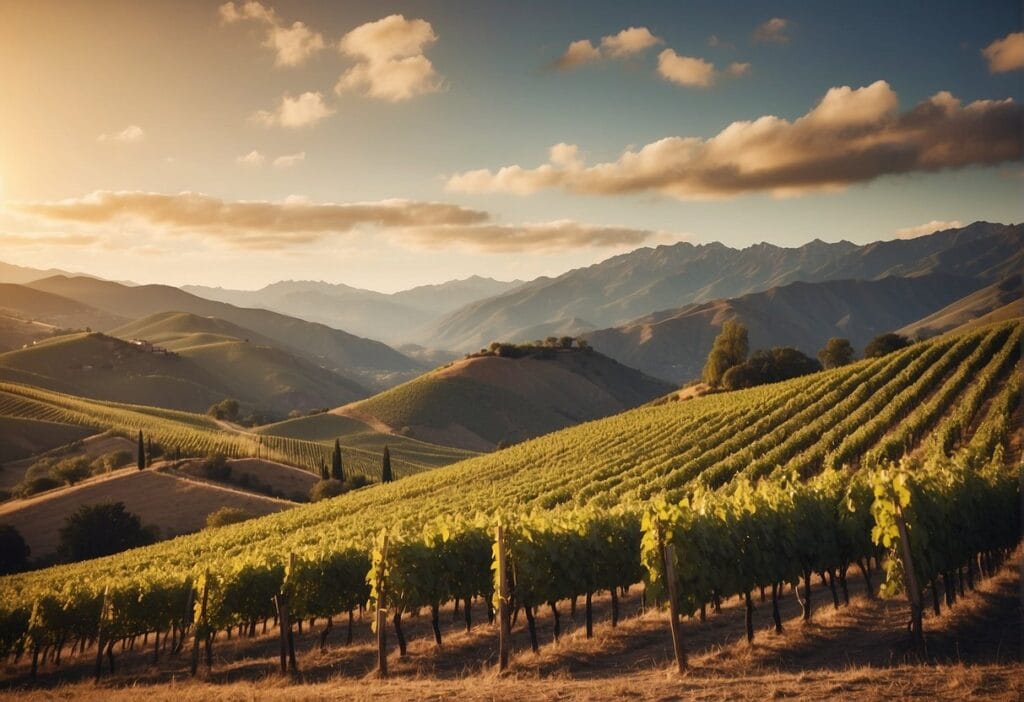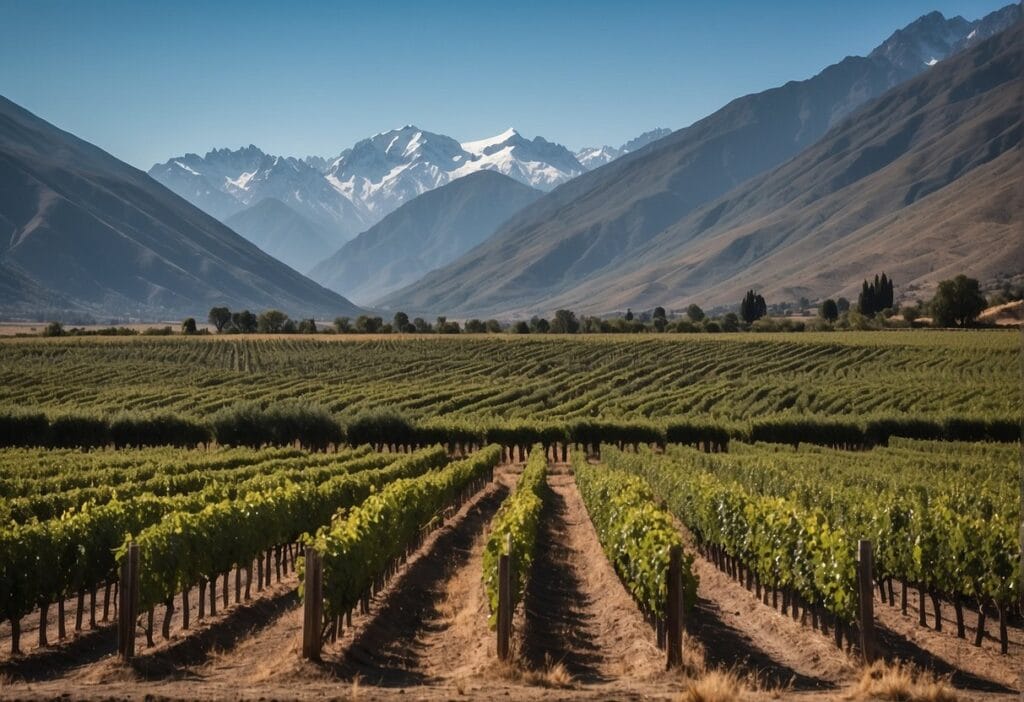Portugal offers a diverse and rich tapestry of wine regions, each boasting its own unique blend of tradition, terroir, and taste. As you journey through the sun-drenched landscapes of this historic nation, you’ll discover the wide variety of wines that have put Portugal on the map for connoisseurs and casual drinkers alike.
From the terraced vineyards of the Douro Valley renowned for its fortified Port wines, to the refreshing Vinho Verdes of Minho, and the bold reds of Alentejo, Portugal’s wine regions cater to every palate.
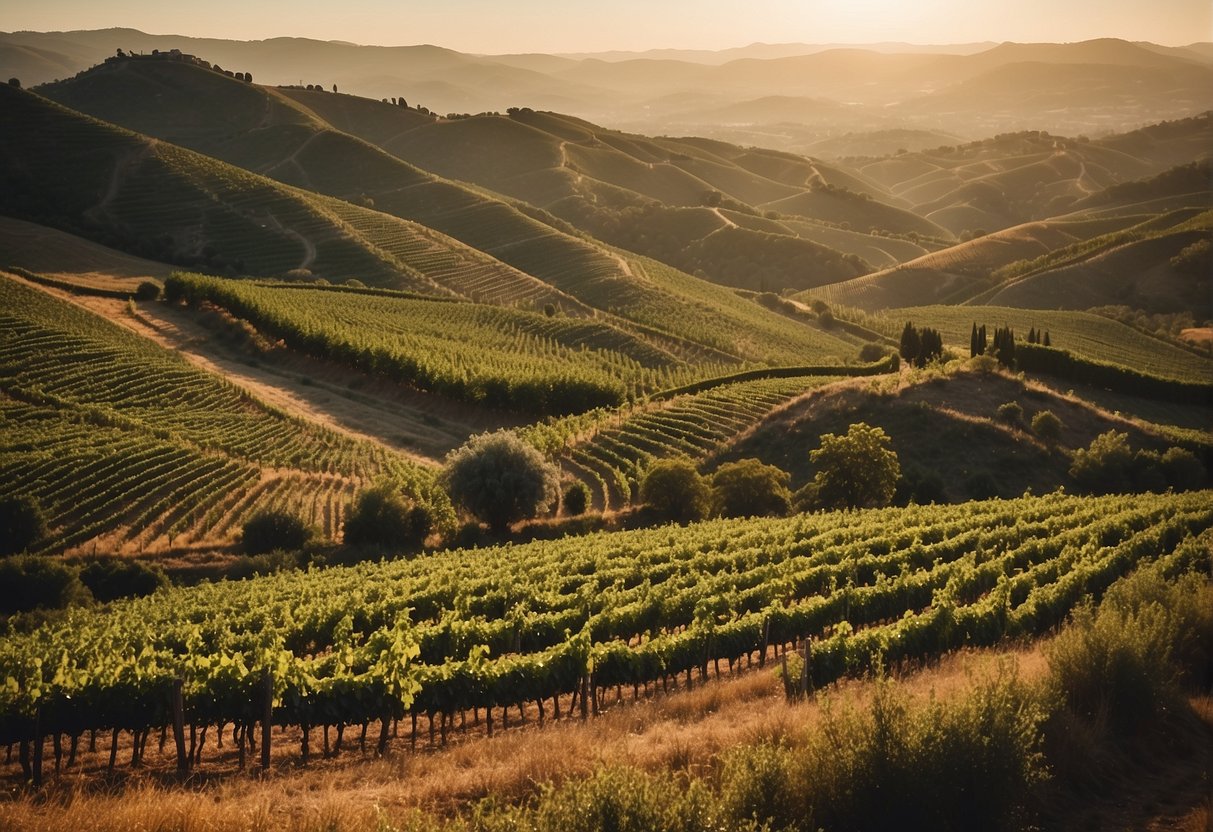
Venturing through the country’s wine country, you’re not just exploring geographically distinct areas but delving into centuries-old winemaking traditions that have shaped the cultural fabric of Portugal.
Whether it’s understanding the wine labeling and classification system, learning about local grape varieties like Touriga Nacional and Alvarinho, or experiencing the burgeoning wine tourism industry, the narrative of Portuguese wine is intricate and inviting.
Behind every bottle, you’ll find a story of people, place, and passion—a story that’s as engaging to learn about as the wines are to taste.
Key Takeaways
- Portugal’s wine regions are incredibly diverse, offering a range of styles from Port to Vinho Verde.
- Local grape varieties and traditional practices are central to Portuguese wine production.
- Wine tourism is a growing facet of Portugal’s wine industry, with each region offering unique experiences.
Overview of Portuguese Wine
When you explore the world of Portuguese wine, you’re delving into a rich history of viticulture that dates back thousands of years.
You’ll find the wine production in Portugal is as varied as its landscapes, ranging from robust reds to light, crisp whites.
Portugal is renowned for its Denominação de Origem Controlada (DOC) system, which ensures quality and authentic regional characteristics. These DOC wines are often the standard-bearers for Portuguese quality on the international stage.
In addition to the controlled appellations, the country also offers Vinho Regional, which allows for a more flexible approach to winemaking. And of course, there’s the everyday enjoyment of table wine — reliable, enjoyable, and a staple at many Portuguese tables.
A unique offering from Portugal is Vinho Verde, a fresh and often lightly effervescent wine that reflects the verdant northern regions of the country. And you can’t talk about Portuguese wine without mentioning the world-famous fortified wines from regions like Porto and Madeira.
Your wine adventure in Portugal will reveal a commitment to tradition coupled with innovative production techniques. Whether it’s a crisp Vinho Verde or a sumptuous port, Portuguese wine is a testament to the nation’s dedication to the craft.
Key Wine Regions of Portugal
When you venture into the Douro Valley, you’re exploring the oldest demarcated wine region in the world, renowned for its bold Port wines and dramatic terraces clinging to the slopes along the Douro River.
The valley’s unique climate and soil contribute to the distinguished terroir of its vineyards.
Heading north, you encounter Minho, the birthplace of the light and slightly effervescent Vinho Verde. This ‘green wine’ is as fresh as it is captivating, reflecting the verdant landscape of the region.
Venture into the heart of Portugal, and you’ll find Dão, nestled in the protection of high mountains. The region is famous for its full-bodied reds, born from a blend of indigenous grape varieties, fostered by the granitic soil and viticulture practices that echo the ancients.
Dive deeper south, and the Bairrada DOC greets you with its robust reds and unique sparkling wines. The maritime climate and sandy soil here combine to create an ideal growing environment for the Baga grape, the star of the region.
The expansive Alentejo region, covering about a third of Portugal, offers wines as varied as its landscape. You’ll taste the bold reds and aromatic whites that have been crafted amidst ancient oaks and rolling plains, where modern winemaking meets traditional methods.
In the vicinity of Lisbon, once called Estremadura, the landscapes and wines are diverse. From the coastal influences shaping the vineyards to the Setúbal Peninsula, famed for its sweet Moscatel de Setúbal, your senses are in for a treat.
Don’t forget Portugal’s island offerings: Madeira and the Azores. The storied Madeira wines, with their unique aging process, and the Azores’ distinct volcanic wines truly showcase the variety of Portuguese terroir.
Head south to the Algarve, and savor the tastes that emerge from its warm, sunny climes. Whether you’re along the coast or within the inland mountains, a glass of local wine always pairs perfectly with the region’s scenic beauty.
Douro Valley
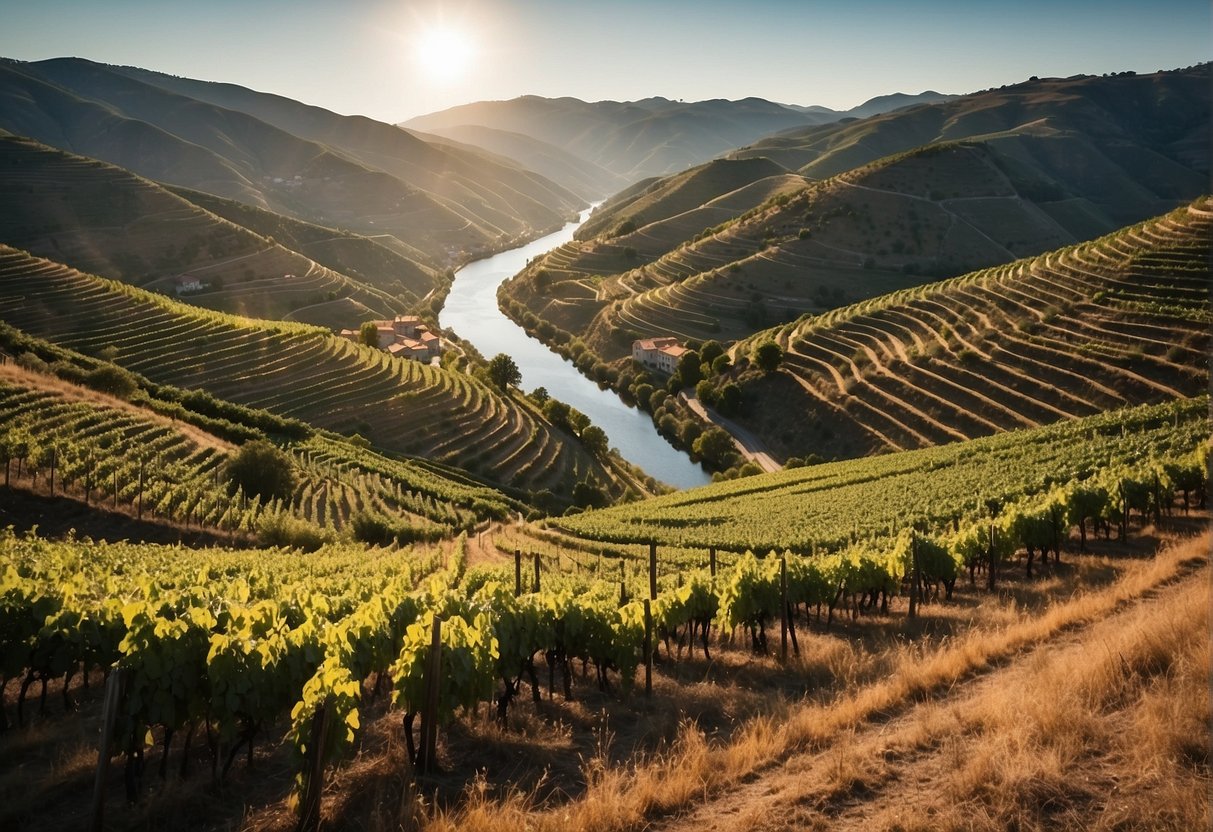
The Douro Valley is your scenic gateway to one of Portugal’s most celebrated wine regions. Here, along the winding path of the Douro River, you’ll find the roots of a winemaking tradition that dates back centuries.
What makes the Douro Valley so special for wine enthusiasts like you is its rich history and the unique terroir. Port wine, famous for its sweet, fortified characteristics, calls this region home.
But there’s more to Douro than just Port; the region also produces exquisite non-fortified table wines that are gaining international acclaim.
The terraced vineyards here present a dramatic landscape, indicative of the labor and love poured into every bottle.
The Douro’s complex soil and the microclimates create an environment where the grapes develop intense flavors, making every sip a reflection of the region’s natural beauty.
Your experience in the Douro Valley wouldn’t be complete without tasting the wine that defines Porto. As the Douro flows down to meet the Atlantic at Porto, this coastal city offers a harmonious blend of cultural experiences to accompany its wine heritage.
Here’s a snapshot of what the Douro Valley offers:
| Attraction | Experience |
|---|---|
| Douro River Cruises | Enjoy the vistas and vineyards from the water. |
| Vineyard Tours | Walk the terraced vineyards and meet the makers. |
| Wine Tastings | Savor the rich variety of Port and table wines. |
| Cultural Sites in Porto | Explore the city’s connection to wine history. |
Whether you’re toasting with a glass of robust vintage Port or a refreshing, lightly-oaked white wine, the Douro Valley is a testament to Portugal’s winemaking prowess. Your journey here will immerse you in a region where every pour tells a story.
Minho
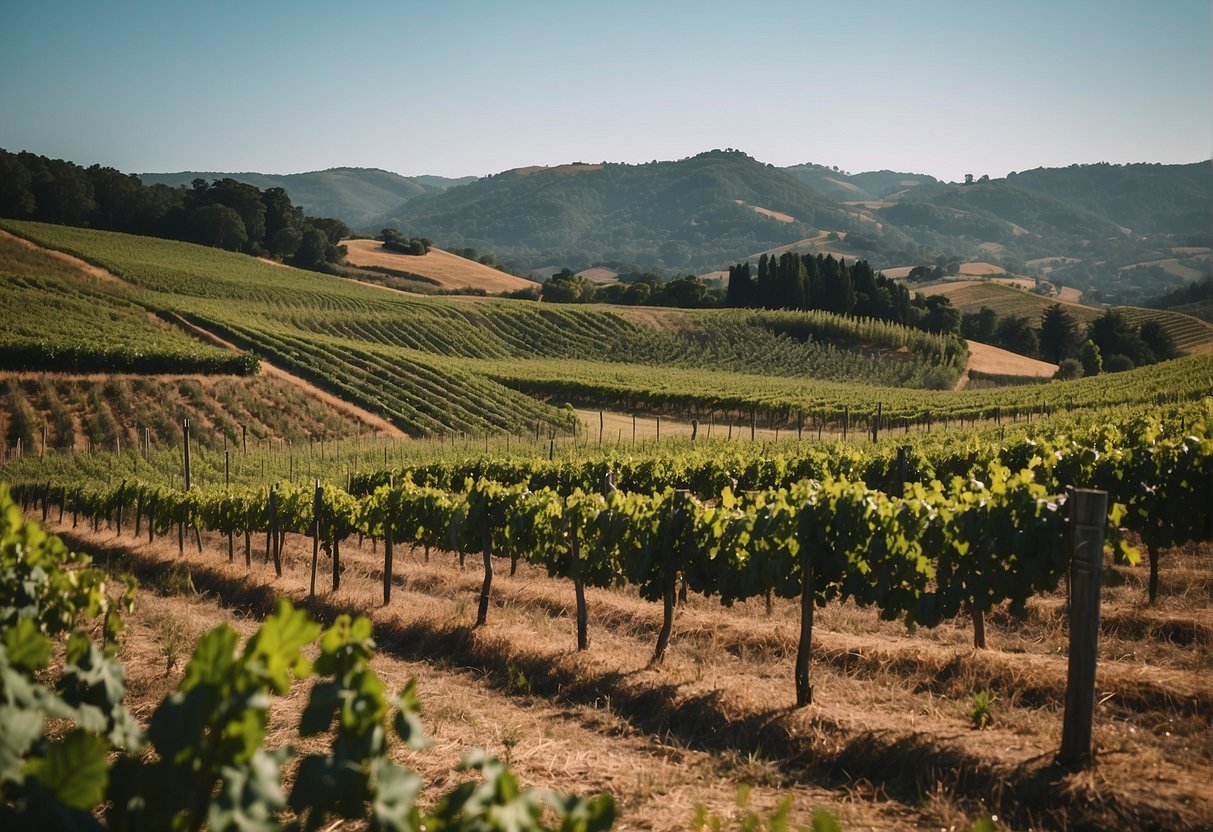
When you explore the lush, green region of Minho, you’re immersing yourself in one of Portugal’s most traditional and beautiful wine areas. Here, the cool, rainy climate and granite-rich soils give life to the renowned Vinho Verde wines. These wines are crisp, light, and often possess a slight effervescence that makes them distinctively refreshing.
Vinho Verde, translating to “green wine”, doesn’t imply the color but rather the youthfulness of the wine. Typically, you’ll find them best consumed within a year of bottling.
Here’s what you can expect from the Vinho Verde you’ll encounter:
- Varieties: Primarily white wines, although some reds and roses exist.
- Flavor Profile: Fresh, citrus, and floral notes with a high acidity.
- Food Pairings: Perfect with seafood, chicken, or as a delightful aperitif.
You’ll discover that Minho’s wine tradition is deeply rooted in its geography. The region stretches from the border with Spain down to the Douro River, hugging the Atlantic coast with its moderating influence.
| Wine Characteristic | Description |
|---|---|
| Region | Minho |
| Wine | Vinho Verde |
| Climate | Cool and Rainy |
| Soil Type | Granite-rich |
| Notable Features | Refreshing Effervescence, High Acidity |
Embrace the Minho region with a glass of Vinho Verde in hand, and you’ll soon understand why this wine is a Portuguese treasure. Whether visiting the terraced vineyards or sipping in the comfort of your home, Minho and its wines offer you a taste of Portugal’s winemaking heritage.
Dão
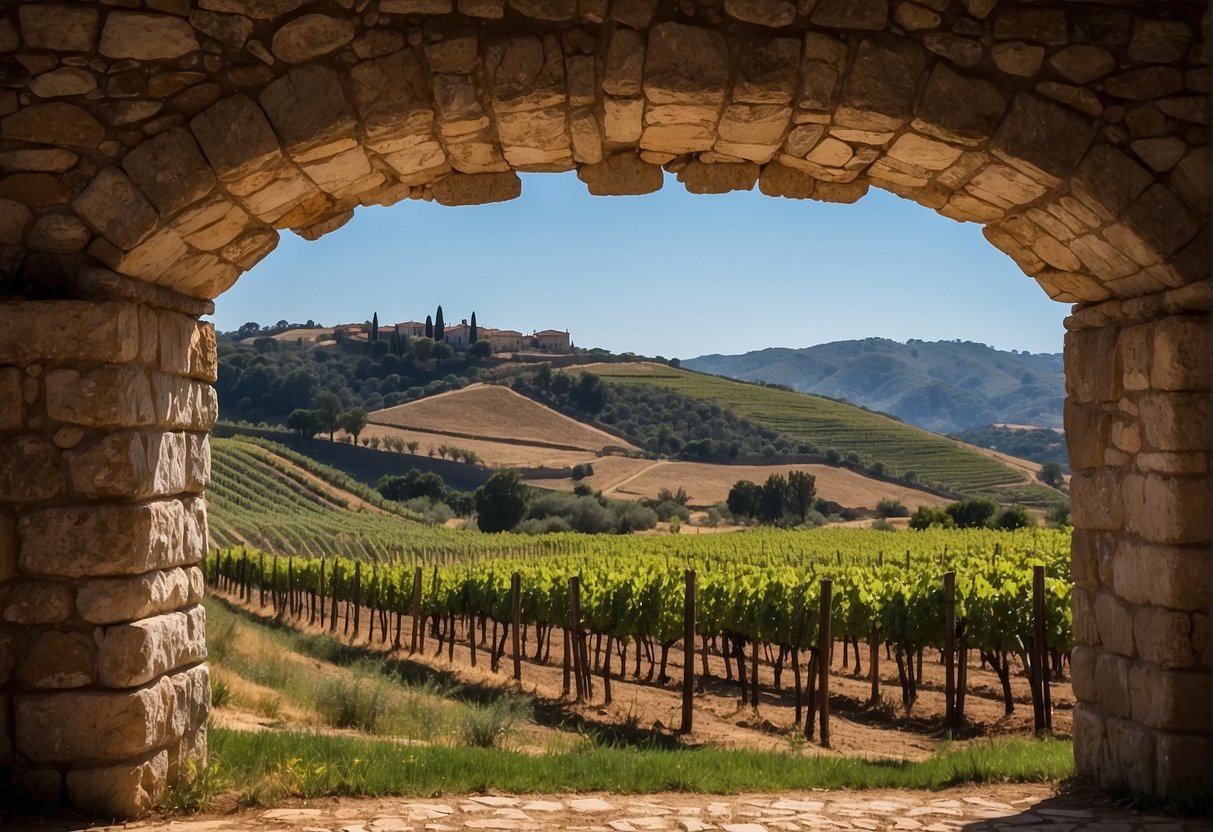
Nestled among majestic mountains in central Portugal, Dão is a highly regarded wine region that you’ll find intriguing. It’s known for its picturesque landscape of pine and eucalyptus forests that span the area between Aveiro and Guarda.
The terrain of Dão is mountainous, with vineyards often located at an altitude between 400 and 700 meters above sea level. This altitude contributes to the cooling effect that’s beneficial for growing grapes. It provides a unique microclimate for winemaking.
Dão’s wine heritage is strong, as it’s recognized as one of Portugal’s oldest established wine regions. Its wines are protected by a ‘Denominação de Origem Controlada’ (DOC), ensuring that standards for grape growing and wine production are meticulously met.
The region’s primary focus is on red wine grapes, accounting for about 80% of vineyard plantings. Some of the key grape varieties native to the Dão include Touriga Nacional, Tinta Roriz, and Jaen. These grapes contribute to the region’s robust and complex reds. However, Dão isn’t just about red wines; there’s also rising interest in crafting quality white wines from varieties such as Encruzado and Malvasia Fina.
Here’s a snapshot of the Dão wine region:
- Altitude: 400-700m
- DOC Status: Yes
- Key Red Grapes: Touriga Nacional, Tinta Roriz, Jaen
- Key White Grapes: Encruzado, Malvasia Fina
- Notable Characteristics: Mountainous terrain, cool-climate
Your appreciation for Dão wines may grow as you explore the distinct flavors that reflect the richness of this land. Enjoying a glass from Dão means savoring a piece of Portuguese tradition that has been cultivated for generations.
Bairrada
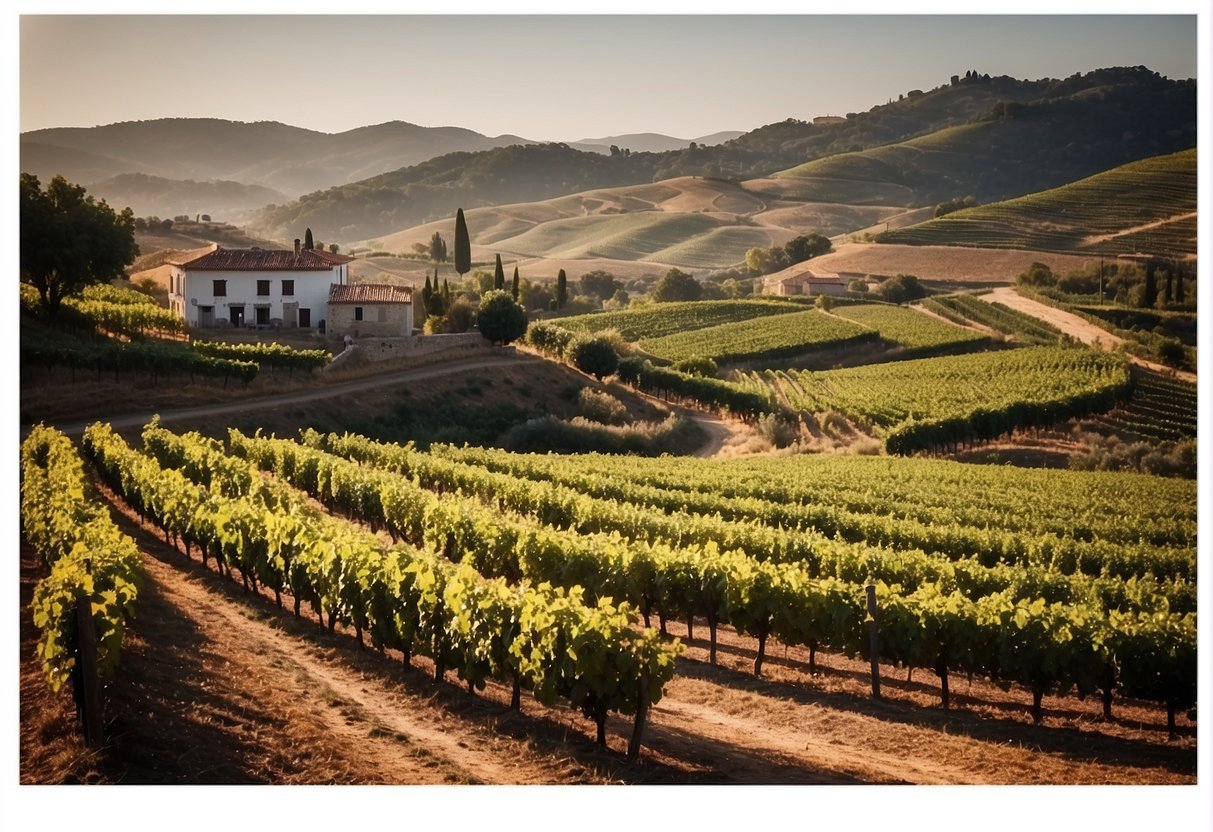
Discover the charms of Bairrada, a renowned wine region situated in the central part of Portugal. This area is celebrated for its impressive production of both still and sparkling wines. With the region’s official designation as a Denominação de Origem Controlada (DOC), Bairrada wines are recognized for their distinct quality and character.
Key Grapes and Wine Styles
- Key Grape Varieties: Primarily Baga, Castelão, and Rufete
- Notable Wines: Full-bodied reds; elegant, traditional-method sparkling wines
When you explore Bairrada’s winemaking, you’ll find that the Baga grape is the star, producing rich red wines with aging potential. Bairrada DOC, in particular, is synonymous with quality, often requiring stricter standards for winemaking.
Soil and Climate
- Soil: Clay and limestone
- Climate: Atlantic influence, cool and damp
The region’s clay-limestone soils contribute to the structured and acidic profile of the wines. Your taste buds will appreciate the crisp freshness, a signature trait from Bairrada’s cool, maritime climate.
Gastronomy
Pair your Bairrada wine with regional dishes such as leitão (suckling pig), which complements the acidity and depth of the local reds. Sparkling wines from Bairrada are also perfect for celebrations or as an aperitif to start your meal with a festive note.
Visiting Bairrada
If you’re planning a visit, expect an array of wineries that offer exquisite tastings and tours. The landscape, with its rolling hills and lush greenery, enhances the overall experience, making Bairrada a worthy destination on your wine discovery journey. To delve deeper, consider exploring the unique offerings detailed in your 2023 guide to Bairrada wine region.
Embrace the rich tradition of Bairrada and indulge in the nuanced flavors of its wines. Whether you’re a seasoned connoisseur or a casual wine enthusiast, Bairrada presents an extraordinary opportunity to expand your palate. Cheers to your wine adventures in Portugal!
Alentejo
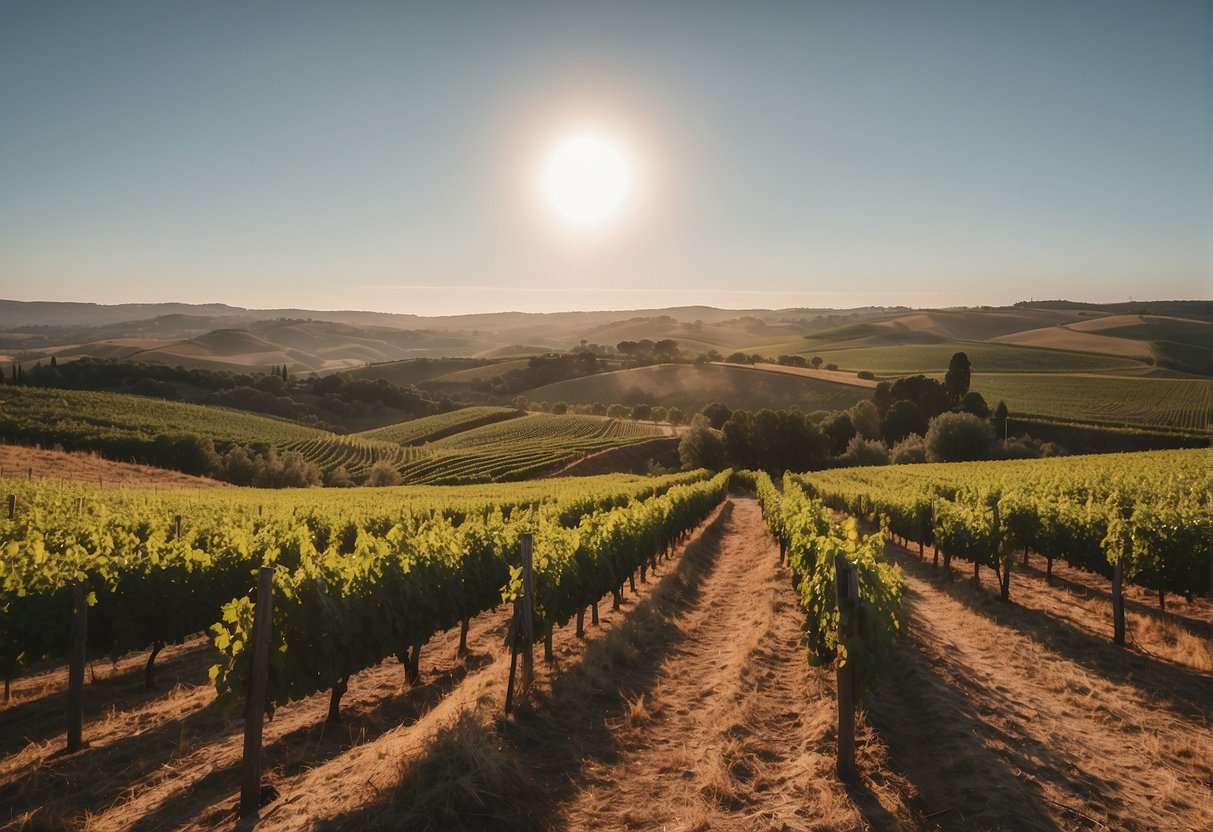
When you explore the winemaking regions of Portugal, Alentejo beckons with its vast and sunny landscapes. Situated between the Algarve and Lisbon regions, Alentejo covers a significant portion of Portugal, making it the country’s largest wine region.
In Alentejo, you’ll find a rich tradition of winemaking that dates back centuries. The region is known for its millenary wines of Talha, an ancient Roman technique still celebrated in this region. The wines of Alentejo stand out for their variety and quality, often crafted from indigenous grapes that thrive in the region’s unique climate.
Key Subregions:
- Portalegre
- Borba
- Évora
- Redondo
- Reguengos
- Granja-Amareleja
- Vidigueira
- Moura
These subregions offer a diversity of terroirs, and you will discover everything from robust reds to refreshing whites. The hot, dry center is particularly suited for red wine production, creating full-bodied wines with a character reflective of the Alentejo landscape.
Alentejo’s wine culture has contributed to its reputation as a key center of Portugal’s wine renaissance over the past decades. While visiting, you’ll not only get to taste excellent wines but also immerse yourself in the living tradition of a land where wine is entwined with its history and people.
Lisboa
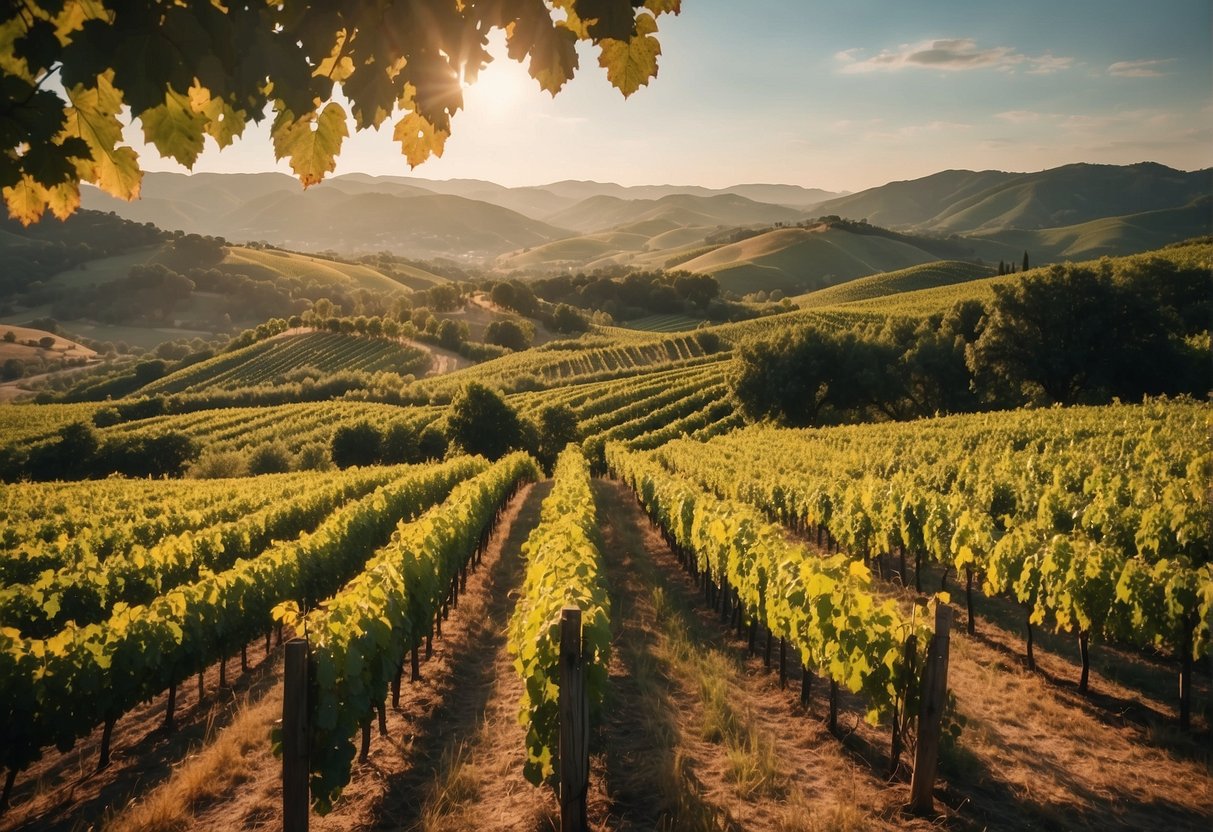
When you explore the Lisboa wine region, you’re diving into one of Portugal’s most dynamic and coastal viticultural areas. Formerly known as Estremadura, this region stretches along the picturesque Atlantic coast north of the country’s capital, Lisbon.
Key Varietals
- Reds: Mostly Touriga Nacional and Castelão
- Whites: Famous for Arinto, Fernão Pires, and Malvasia
Lisboa is known for its maritime climate, which brings cool breezes from the Atlantic, moderating the temperature and contributing to the refreshing qualities of its wines. You’ll notice that white wines from Lisboa often have a crisp, zesty profile, perfect for a warm day by the sea.
Winemaking Traditions
- Indigenous Grapes: Embrace the local varieties that have been cultivated for centuries.
- Maritime Influence: Tasting the influence of the ocean in the character of the wine.
Sub-regions to Visit
- Colares: A small area with ungrafted vines, producing robust reds.
- Carcavelos: Though small, it’s known for fortified wines that once rivaled Port.
- Bucelas: Here’s where you can delight in aromatic white wines, especially from the Arinto grape.
If you’re a wine enthusiast, a tour through the Lisbon wine region could become one of your most cherished memories. The authenticity and variety offered across the wineries allow you to experience a range of tastes, from bold reds to delicate whites.
Tejo
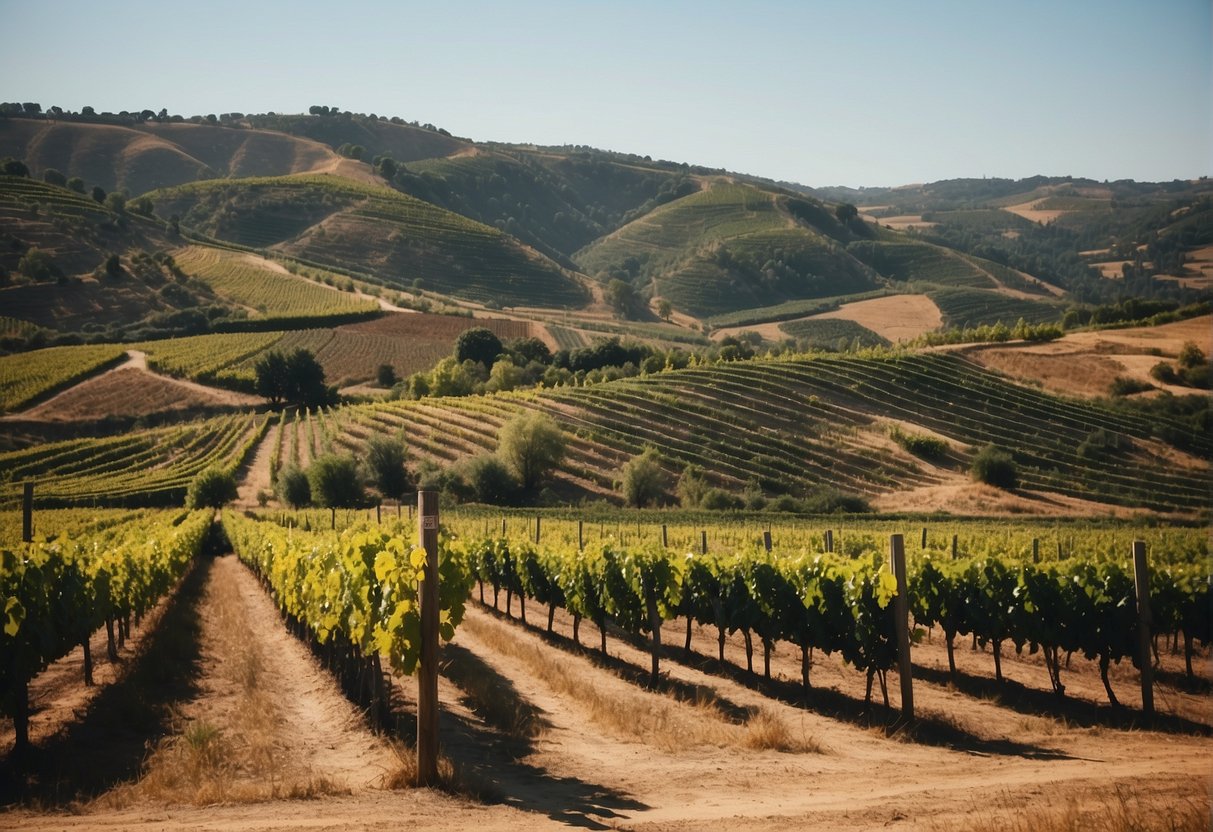
Tejo, the vibrant wine region at the heart of Portugal, welcomes you with a fusion of tradition and community spirit. Bordered by the majestic Tagus River that moderates the climate, you’ll find vineyards thriving on fertile plains, making the area renowned for its viniculture.
The Tejo wine region is split into various sub-regions, each offering your palate distinct experiences. Sip on wines from Almeirim, Cartaxo, or Tomar; these are just a few among the diverse sub-regions of Tejo. The soils here, enriched by the proximity to the river, contribute significantly to the flavor profile of the local wine.
| Sub-region | Notable Characteristics |
|---|---|
| Almeirim | Vibrant, Fruit-forward Wines |
| Cartaxo | Robust, Earthy Reds |
| Chamusca | Elegant, Aromatic Whites |
| Coruche | Bold, Structured Varieties |
| Santarém | Complex, Minerally Notes |
| Tomar | Delicate, Balanced Flavors |
If you’re a history buff, Tejo has more than just wine to offer. Immerse yourself in its rich heritage, from Roman ruins to Gothic castles, and let the stories of the past enhance your wine-tasting experience. Explore historical treasures and connect with the pages of time that have influenced this region’s winemaking traditions.
The local gastronomy pairs exquisitely with Tejo wines, allowing for a complete cultural indulgence. To truly experience Tejo, engage with the locals and discover their practices in winemaking that reflect a blend of time-honored methods and modern techniques.
Algarve
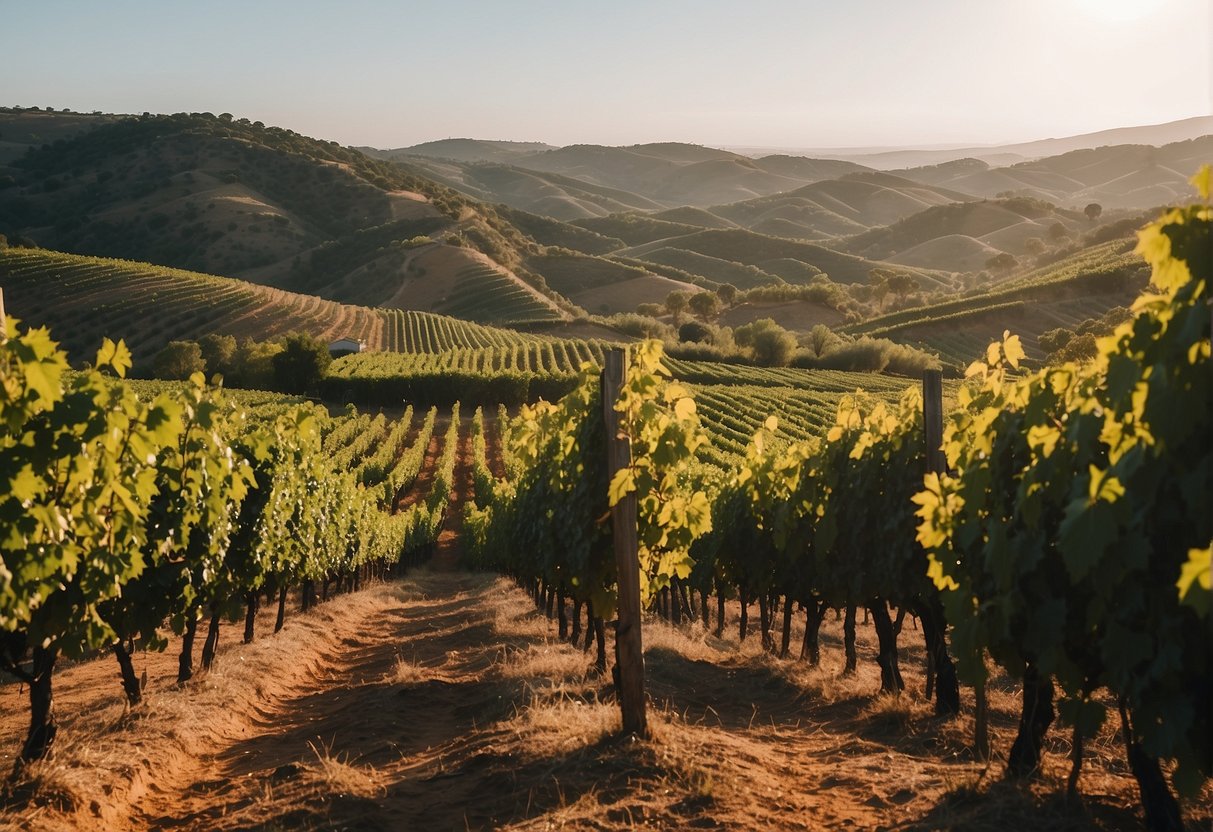
When you think of Portugal’s wine regions, the sunny and scenic Algarve may not be the first to come to mind, yet it’s a rapidly ascending star in the wine world. The Algarve is situated in the south of Portugal.
The Algarve is revered not only for its beautiful beaches and golf resorts, but also for its burgeoning wine industry.
Wine Production
Your journey into the Algarve’s wine scene will introduce you to its four noteworthy D.O.P (Denominação de Origem Protegida) subregions: Lagos, Portimão, Lagoa, and Tavira. Each of these areas is dedicated to honing the craft of winemaking, with a clear focus on quality and distinctive local grape varieties.
Grape Varietals
You’ll find a range of grape varietals that thrive in the Algarve’s warm climate. Expect to encounter compelling reds and refreshing whites that encapsulate the essence of the region.
Predominant red varietals include Negramoll and Castelão, while Arinto, Malvasia Fina, and Siria stand out among the whites.
Why Visit?
Your visit to the Algarve will gift you with more than just wine tastings. The region boasts a richness in culture, pairs exquisite local cuisine with its wines, and offers panoramic views that are as memorable as the wines themselves.
Remember to explore not only the wine in the Algarve, but also take the time to soak in the tranquil beauty and warm southern hospitality that will make your wine experience in this part of Portugal thoroughly enjoyable.
Madeira
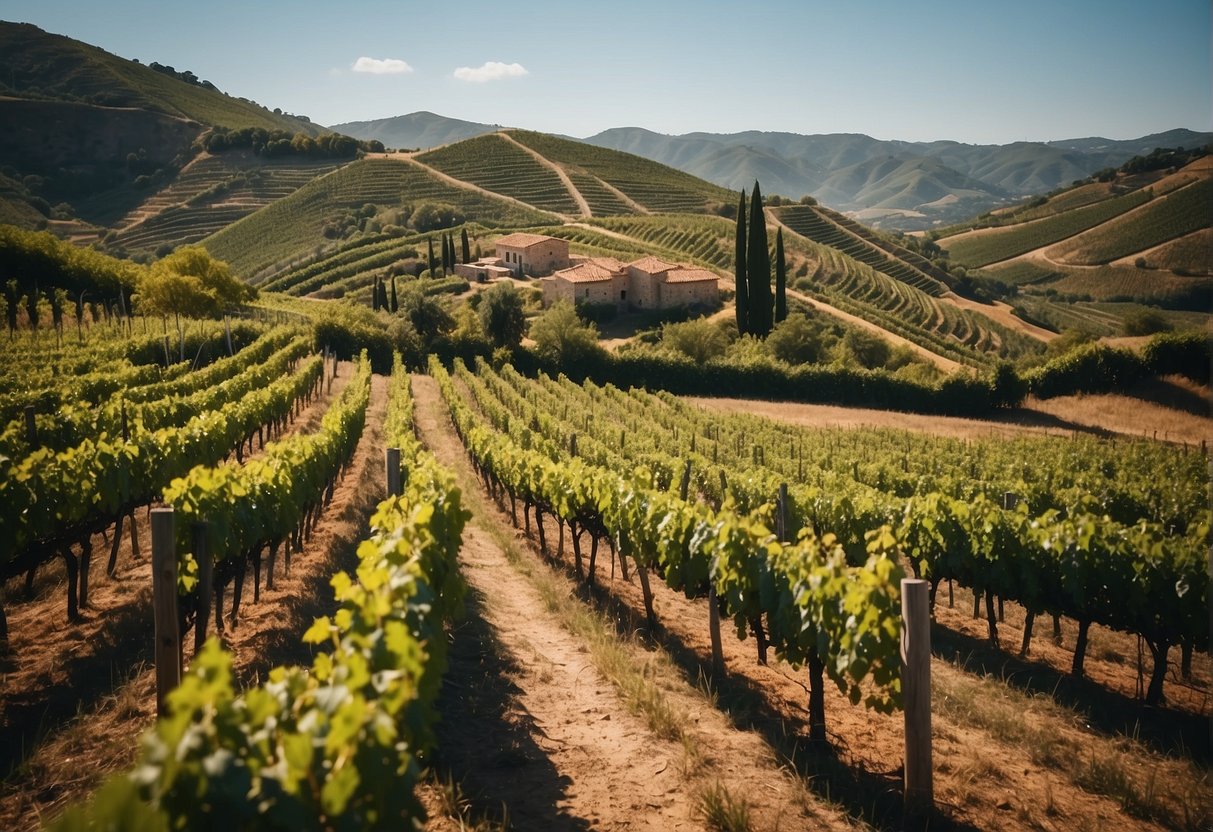
Madeira, a name that resonates with the rich tapestry of Portuguese wine history, is a region you’ll truly treasure as an oenophile. Located off the coast of Africa, this archipelago is not only a scenic delight but also the birthplace of one of the world’s most distinctive fortified wines: Madeira wine.
As you explore this wine region, you’re engaging with a tradition that spans over five centuries. The unique production process of Madeira involves heating the wine, which imparts it with a remarkable longevity and robust character, thus offering you a taste that’s as enduring as the island’s storied past.
| Characteristic | Detail |
|---|---|
| Location | Portuguese archipelago in the Atlantic |
| Wine Type | Fortified |
| Known for | Madeira wine |
| Styles | Dry to sweet |
The diversity of styles means there’s a Madeira wine fit for every palate. Whether you lean towards drier wines to savor on their own, or the sweeter varieties that complement a dessert, Madeira caters to all tastes.
Due to the island’s volcanic soil and unique climate, the wines possess high acidity and a complex array of flavors, ensuring a sip filled with history and quality.
If you’re looking to enrich your wine experiences, the Madeira wine region offers more than just its eponymous wine. You can also find still wines labeled under DO Madeirense, celebrated for their distinct taste profile.
In your journey through Madeira’s wine culture, remember to visit local vineyards. Here, the picturesque vine pergolas not only contribute to the island’s charm but also to the grapes’ quality, enhanced by the Atlantic’s breezes.
Remember, Madeira isn’t just a drink. It’s a testament to the island’s heritage, offering you a unique blend of flavors that withstand time, much like the storied cobbled streets of Funchal themselves. Cheers to discovery and the timeless joy of wine!
Azores
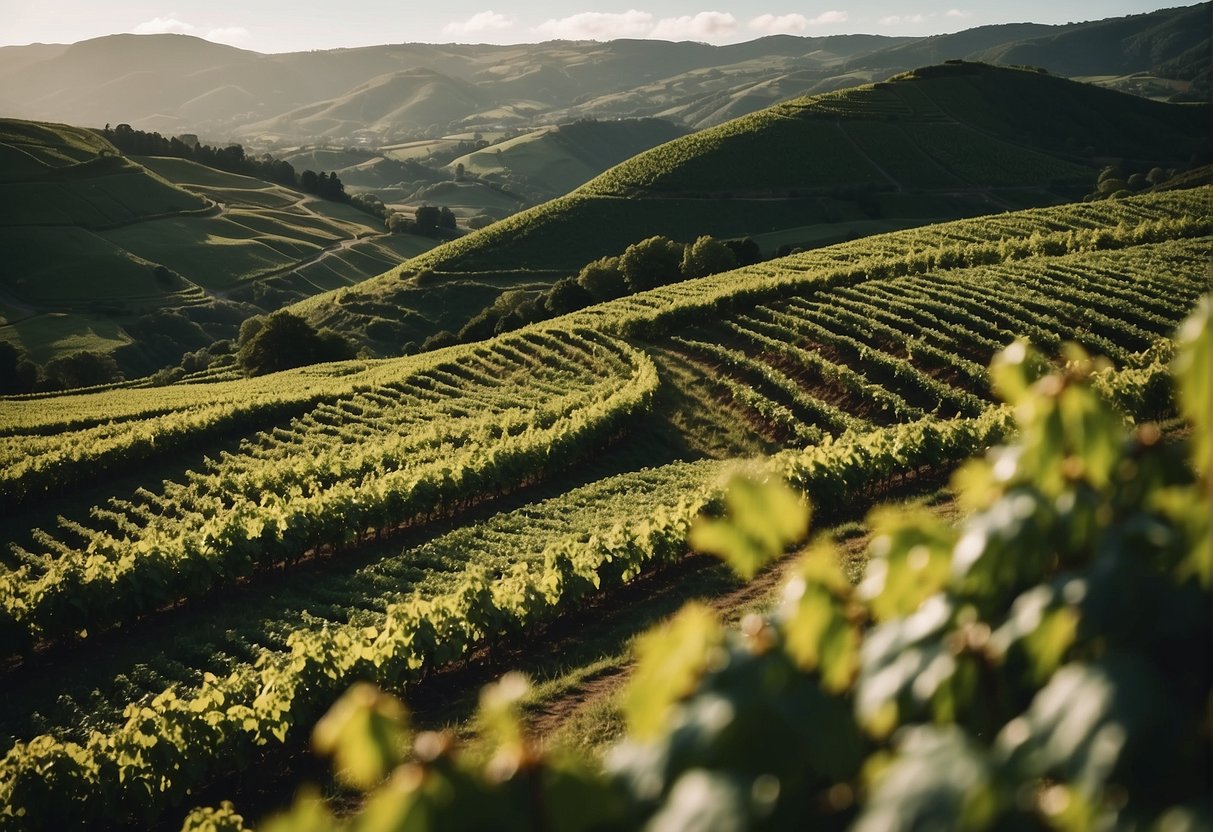
You’ll find the Azores wine region as an archipelagic gem in the midst of the North Atlantic Ocean. This Portuguese territory, known for its volcanic lineage, is about 1,600km west of the mainland.
Wine Varieties:
- Verdelho
- Arinto
- Terrantez
If you’re curious about the geography, you’re looking at an ensemble of nine beautiful islands, with Pico, Graciosa, and Terceira being your go-to for wine cultivation.
Each has a distinct offering due to its unique terroir.
Interestingly, the Azores is home to a UNESCO World Heritage Site at Pico Island Vineyard, where the vines are uniquely shielded by stone walls known as corrals. These structures protect them from severe winds and salty sea spray, contributing to the wines’ distinctive character.
Pico Island Vineyard:
- UNESCO World Heritage Site
- Protected by corrals
When you sip on Azores wine, you’re tasting more than just grapes; you’re experiencing flavors shaped by volcanic soil and the brisk, oceanic climate.
Although traditionally recognized for liquor wines, the region is expanding to offer more table wines.
Your palate might note that Azores wines have an exotic flair that stands out in comparison to other Portuguese wines.
Embrace the opportunity to explore these wines, as they reflect a blend of heritage and the islands’ dynamic natural forces. For further details on the wine landscape, check out the information about the Azores Wine Region.
Setúbal Peninsula
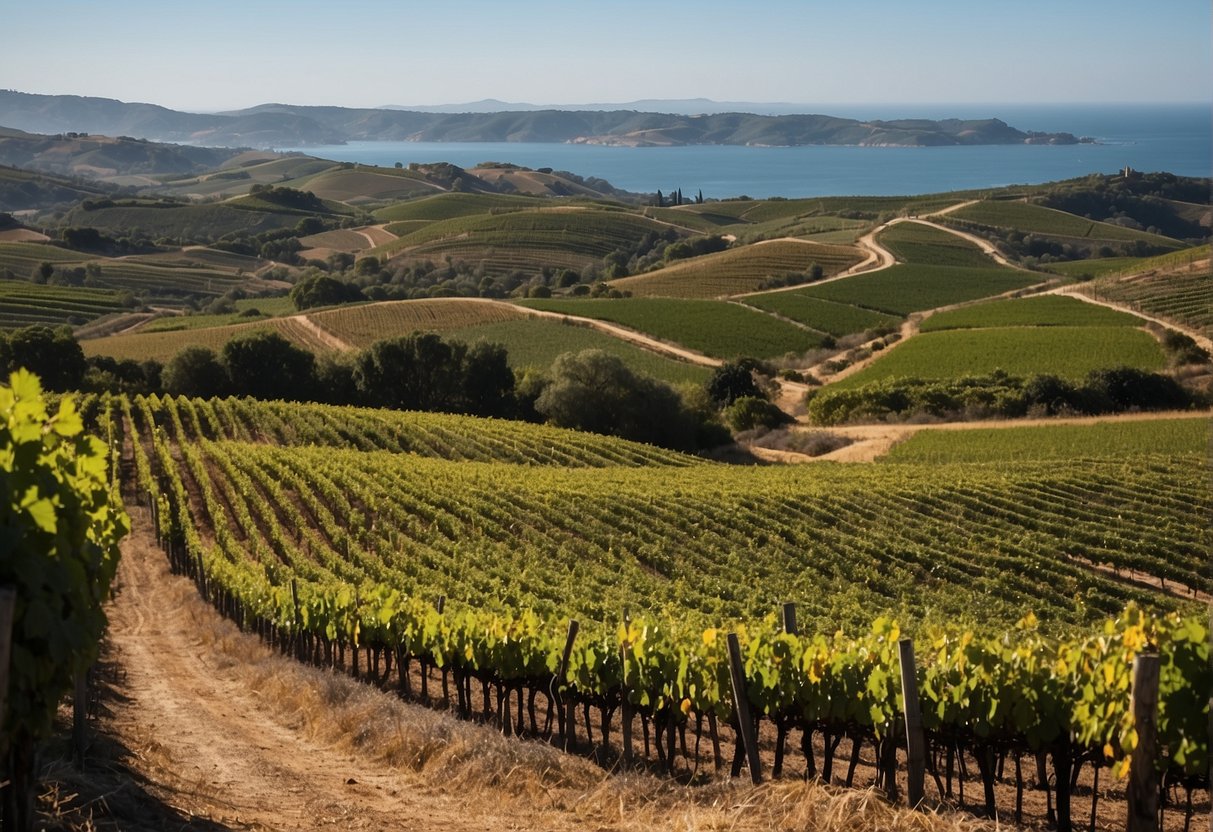
The Setúbal Peninsula is a captivating wine region in Portugal, celebrated for its unique viticultural offerings. If you’re a wine enthusiast, the Peninsula de Setúbal will charm you with its famed Moscatel de Setúbal, a fortified wine with a rich and luscious taste profile.
This region’s wine-making history is impressive, with roots extending back centuries, making it a must-visit for those keen on exploring tradition-steeped wine territories. It includes two designations of origin: Palmela and Setúbal, where the Península de Setúbal Wine Region in Portugal has become a symbol of wine tourism.
Here’s what you need to know about the wines and the region:
- Moscatel de Setúbal: An aromatic fortified wine that has earned international acclaim for its complex flavors, often revealing notes of orange blossom and citrus.
- Palmela: Known for producing excellent table wines, particularly from the Castelão grape variety, which thrives in the region’s sandy soils.
As you venture through the Setúbal Peninsula, your palate will be treated to a diverse range of wines beyond Moscatel. The regional wines, labeled as Península de Setúbal, often demonstrate the versatility of the area’s terroir.
Peninsula’s Lands:
- Climate: Mediterranean, with warm, dry summers and mild winters
- Soil Types: Sandy to clay-limestone, contributing to a distinctive mineral quality in the wines
Wine tourism in the Setúbal Peninsula is an immersive experience, thanks to the areas like A Wine Lover’s Guide to the Setúbal Peninsula.
Friendly local winegrowers are eager to share their knowledge and let you explore their vineyards.
Your visit here promises not just a tasting but an intimate glimpse into the heart of Portuguese winemaking tradition. Explore further by visiting the notable Peninsula de Setubal Region Wine.
Beira Interior
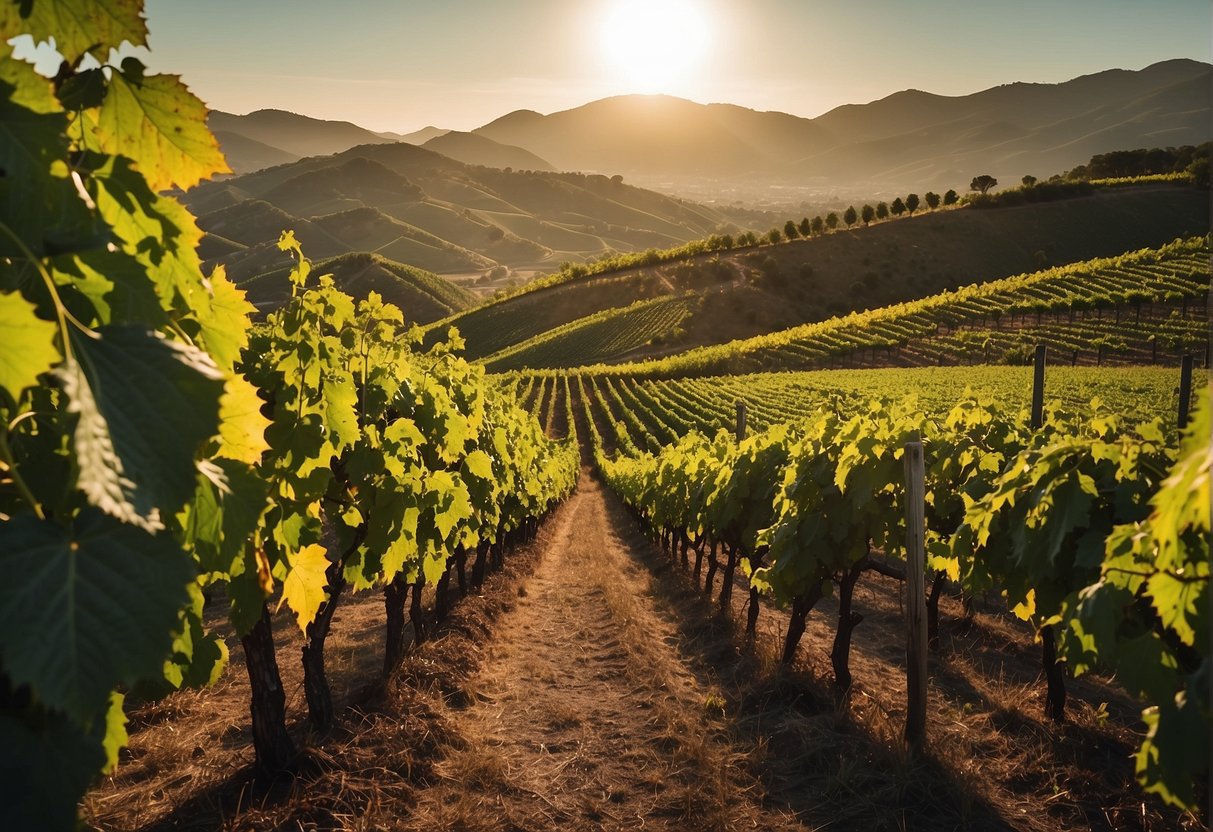
The Beira Interior wine region is one of Portugal’s hidden gems. Nestled between the mountain ranges of the central Iberian Peninsula, it is defined by its high-altitude vineyards and a remarkable history of winemaking that dates back to Roman times.
In Beira Interior, you’ll find the towns of Guarda and Castelo Branco, which are key to the region’s viticulture.
Guarda stands as the highest city in Portugal, contributing to the distinct climatic conditions that favor the cultivation of both indigenous and international grape varieties.
The city of Castelo Branco offers a warm hospitality that pairs well with the area’s fine wines.
Geography & Climate:
Your wine journey through Beira Interior will reveal a terrain marked by its rugged landscape and a climate that experiences both harsh winters and hot summers.
This stark contrast is crucial as it helps produce wines with intense flavors and aromatic freshness.
Here’s a quick look at what you can expect from this wine region:
- Varietals: Predominantly known for robust reds and elegant whites.
- Food Pairings: Taste these wines with the region’s rich gastronomy for an enhanced experience.
If you’re seeking to explore further, consider guided tours that bring you face-to-face with local winemakers, giving you an authentic taste of Beira Interior’s viticulture.
While you’re there, don’t miss out on trying local favorites from the three sub-regions: Castelo Rodrigo, Pinhel, and Cova da Beira. Each offers unique expressions of the challenging yet rewarding terroir.
Trás-os-Montes
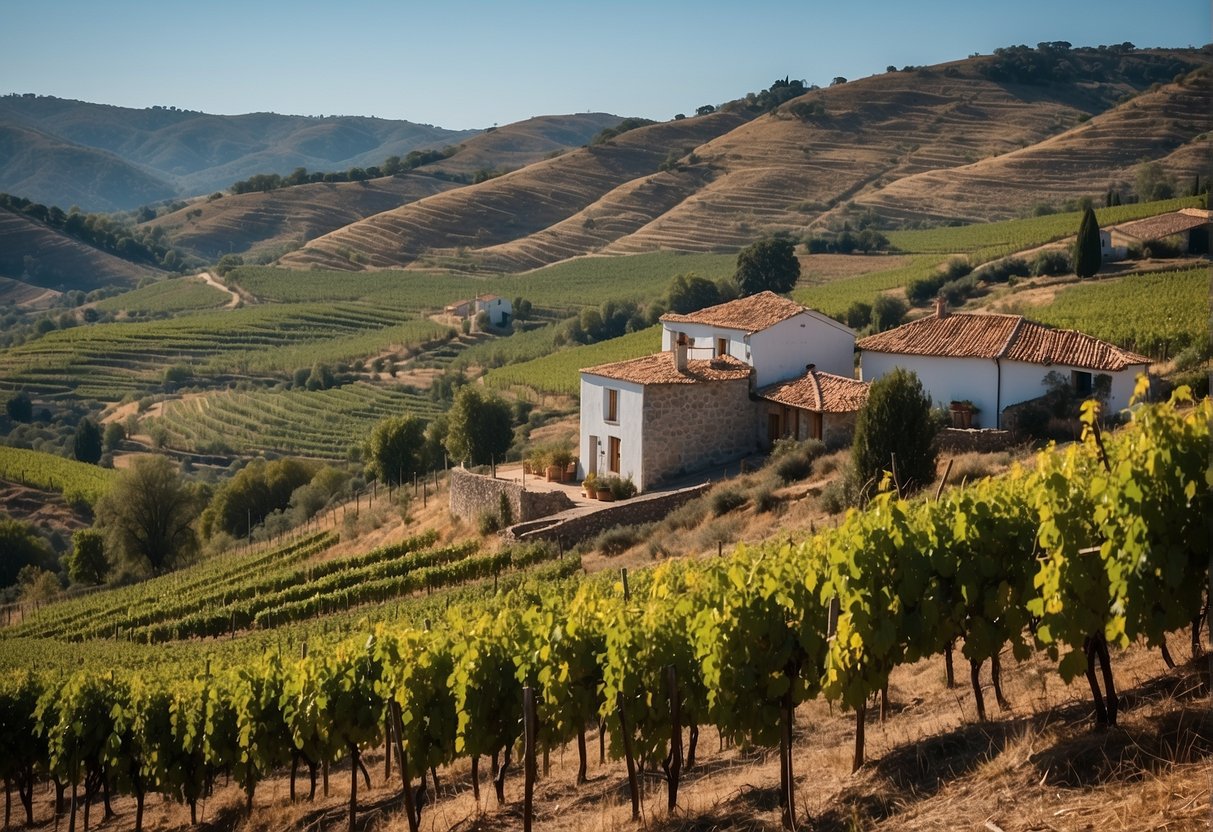
In Portugal’s far northeastern corner, you’ll find the enchanting Trás-os-Montes wine region, a hidden gem that’s just waiting for you to discover. This area, often referred to as “Behind the Mountains,” boasts a winemaking tradition that blends rich history with the rugged, unspoiled landscapes it calls home.
Sub-regions
Trás-os-Montes is divided into three distinct sub-regions:
- Chaves
- Valpaços
- Planalto Mirandês
Each brings its own unique characteristics and flavors to the wines produced.
Chaves, known for its terraced vineyards along valleys, gifts wine enthusiasts with vibrant, full-bodied wines. Meanwhile, Valpaços is characterized by a plateau rich in water resources, contributing to lush, aromatic wines. Finally, Planalto Mirandês stands out for its elevated terrain and cooler climate, resulting in fresh and elegant wine profiles.
Grape Varieties
You’ll savor wines made from a plethora of grape varieties, including the great white grape Viosinho and other local varieties such as Tinta Roriz and Touriga Nacional.
These grapes are nurtured in the Trás-os-Montes’ diverse terroir, featuring altitudes that range from moderate to high and a mix of microclimates.
Wine connoisseurs appreciate Trás-os-Montes for its DOC (Denominação de Origem Controlada) designation, a mark of quality and authenticity. Whether you’re an enthusiast or a curious explorer, the wines from Trás-os-Montes offer a taste that is both unique and steeped in tradition.
Notable Portuguese Grape Varieties
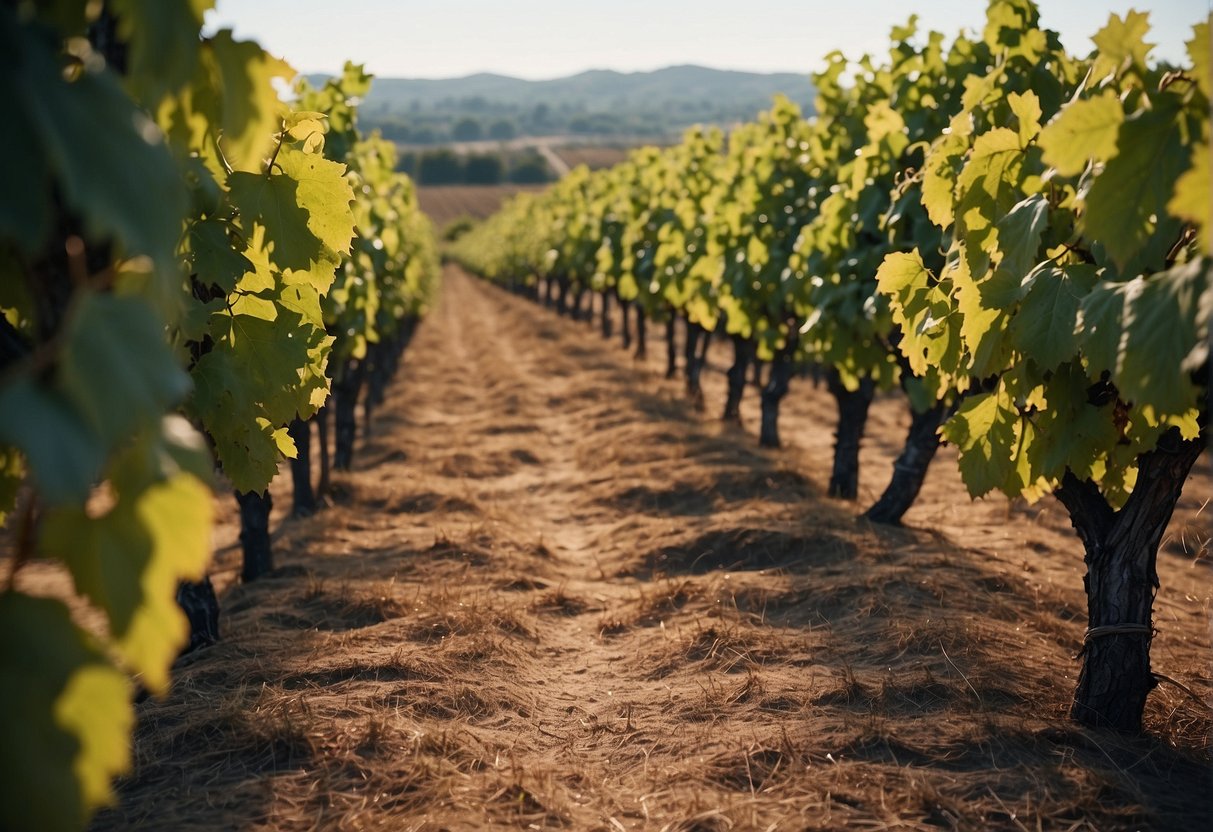
Your journey through the wine regions of Portugal wouldn’t be complete without exploring the standout indigenous grape varieties that give Portuguese wines their unique character and flavor profile. Let’s meet some of the stars.
Touriga Nacional
Touriga Nacional is often described as the quintessential Portuguese grape, revered for its role in the famed Port wines of the Douro Valley. It’s a grape that strikes a balance between power and elegance, offering rich, concentrated flavors and an aging potential that rivals the finest.
Touriga Franca
As one of the major components of Port wine blends, Touriga Franca stands out for its ability to thrive in various Portuguese terroirs. It contributes fragrant floral notes and complex fruit flavors to the wine, making it a versatile player in the creation of both fortified and still wines.
Tinta Roriz
In Portugal, Tinta Roriz—internationally known as Tempranillo—adapts well to the diverse climates of Portuguese wine country. It’s beloved for adding structure and age-worthiness to blends, particularly in the creation of drier red wines where its flavors of ripe red fruit shine through.
Castelão
Finally, Castelão, a variety that adapts to sandy soils and warmer climates, is widespread particularly in the southern regions of Portugal. It can produce wines that vary from light and fruity to rich and age-worthy, largely depending on the age of the vines and winemaking techniques. This versatility has earned Castelão a celebrated place among Portuguese grape varieties.
Notable Portuguese Grape Varieties
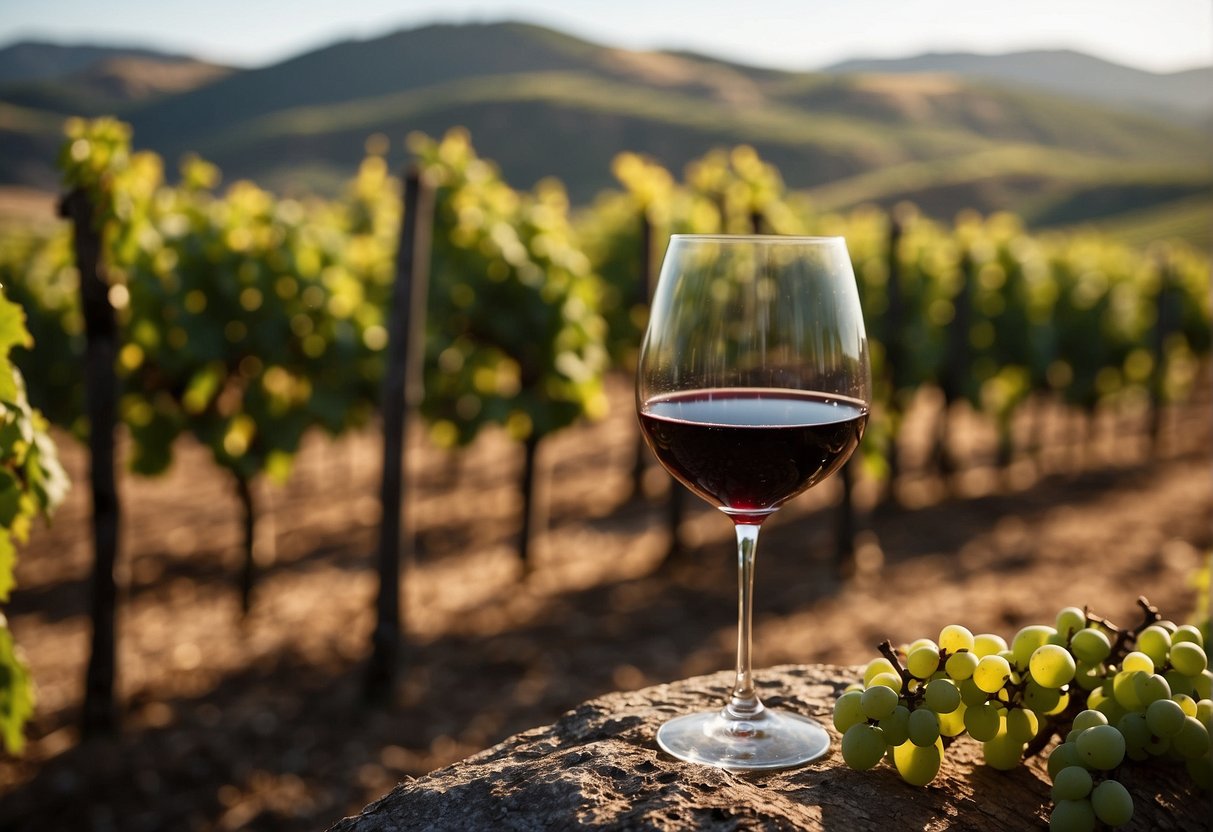
Portugal offers a rich tapestry of both indigenous and international grape varieties, each bringing distinct flavors to the country’s vinicultural landscape. You’ll discover that local heroes like Touriga Nacional are central to the nation’s wine identity.
Arinto
Arinto is a versatile white grape known for its vibrant acidity and lemony zest. It’s primarily grown in the Vinho Verde region and can produce wines with excellent aging potential.
Alvarinho
Alvarinho is the Portuguese name for the grape more commonly known as Albariño in Spain. Esteemed for its peach and citrus notes, Alvarinho creates aromatic wines that are the highlight of the Minho region.
Baga
Baga is a red grape variety that reigns predominantly in the Bairrada region. Grapes from Baga vines produce robust, tannic wines with flavors of dark berries, making them suitable for extended aging.
Fernão Pires
Known for its aromatic profile, Fernão Pires crafts fragrant wines with floral and tropical fruit notes. This white variety is one of Portugal’s most planted grape types, reflecting its popularity and versatility.
Notable Portuguese Grape Varieties
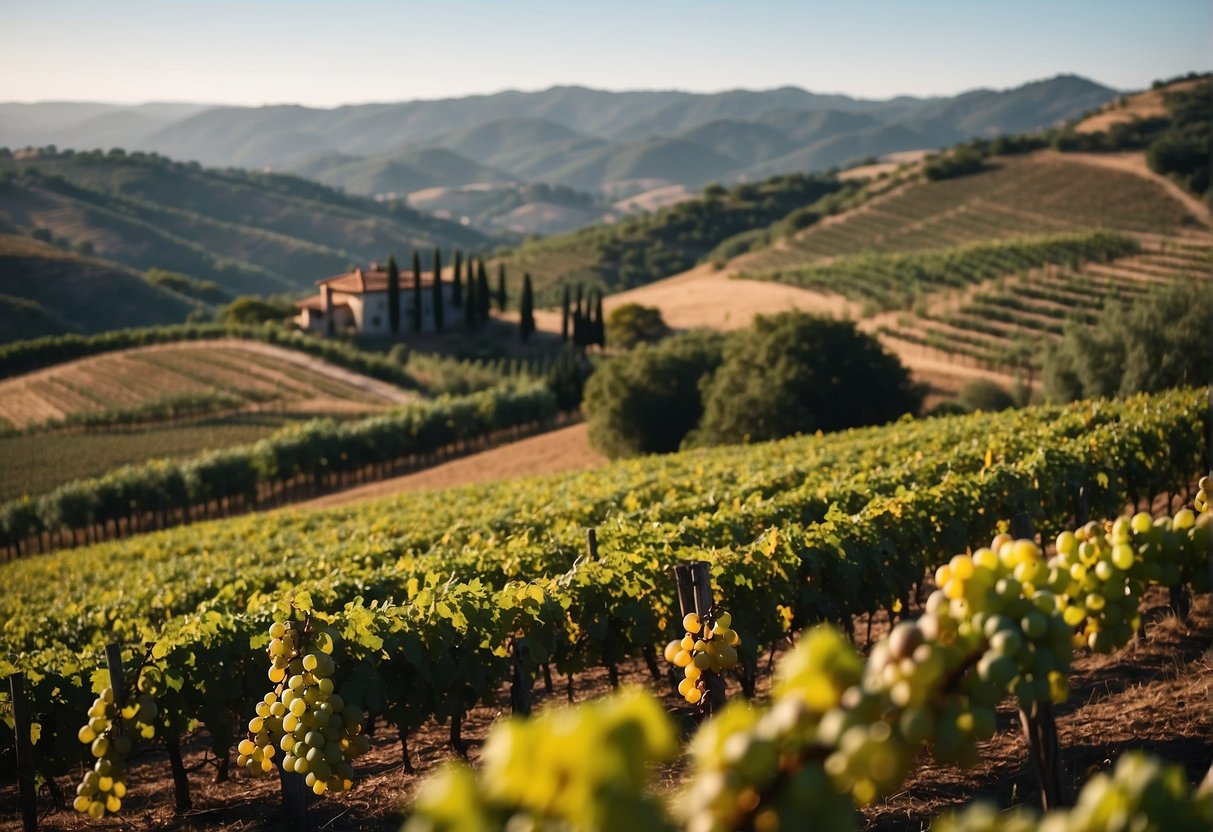
Portugal is renowned for its wide array of indigenous grape varieties, which are central to the distinct character of its wines. Many of these local varieties are not widely planted elsewhere, making Portuguese wines uniquely interesting.
Verdelho
Verdelho is a white grape variety that offers a refreshing minerality and bright acidity in the wines it produces. Typically associated with the island of Madeira, Verdelho can also be found in the Azores and along the mainland coast.
Alfrocheiro
Alfrocheiro is known for its deep color and intense berry flavors. This red grape contributes to the complexity and richness of the wines, particularly in blends from the Dão region where it thrives.
Trincadeira
Trincadeira, or Tinta Amarela as it’s sometimes known, stands out for its ability to produce aromatic wines with spicy notes. Your palate may detect hints of dark fruits when tasting wines from this variety, predominantly cultivated in Alentejo and the Douro Valley.
Encruzado
Encruzado is prized for its elegant white wines, which often possess a delicate balance of acidity and body. You’ll find that Encruzado is commonly grown in the Dão region, contributing floral and citrus notes to its wines.
Notable Portuguese Grape Varieties
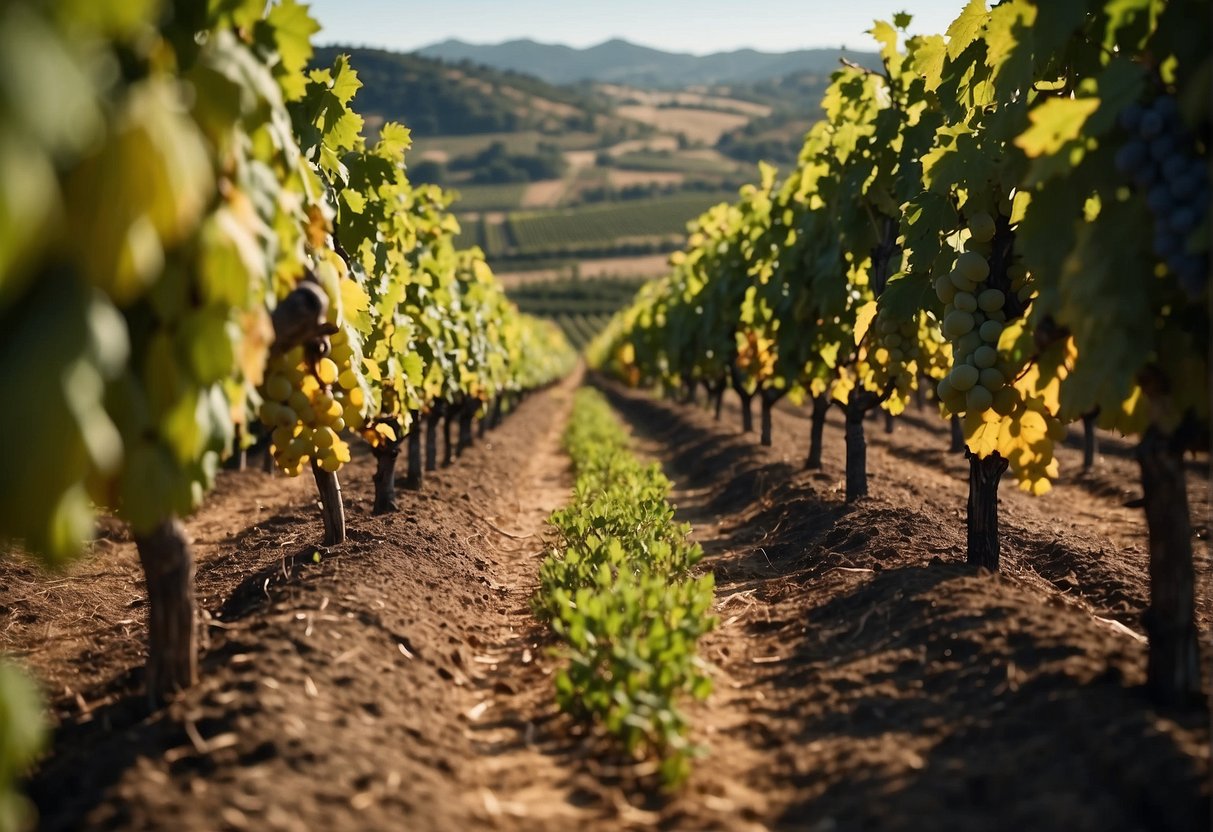
Your exploration of Portuguese wines isn’t complete without getting acquainted with the country’s distinctive grapes. The list below introduces you to key varieties that make Portugal a rich and unique wine-producing nation.
Antão Vaz
Antão Vaz is your go-to choice for a robust white wine experience. Thriving in the warm Alentejo region, this grape is known for creating full-bodied wines with a tendency to age well, often offering rich tropical fruit flavors.
Sercial
Sercial grapes, a vital component in the production of Madeira, the celebrated fortified wine, are acclaimed for their high acidity. When you savor a glass of dry Madeira, it’s the lemony crispness of Sercial you’re enjoying.
Alicante Bouschet
A rare teinturier grape variety where the flesh is also red, Alicante Bouschet gives you wines with deep colors and robust tannins. Originating from France but adopted by Portuguese vintners, this grape is often used to add complexity and body to a blend.
Wine Labeling and Classification
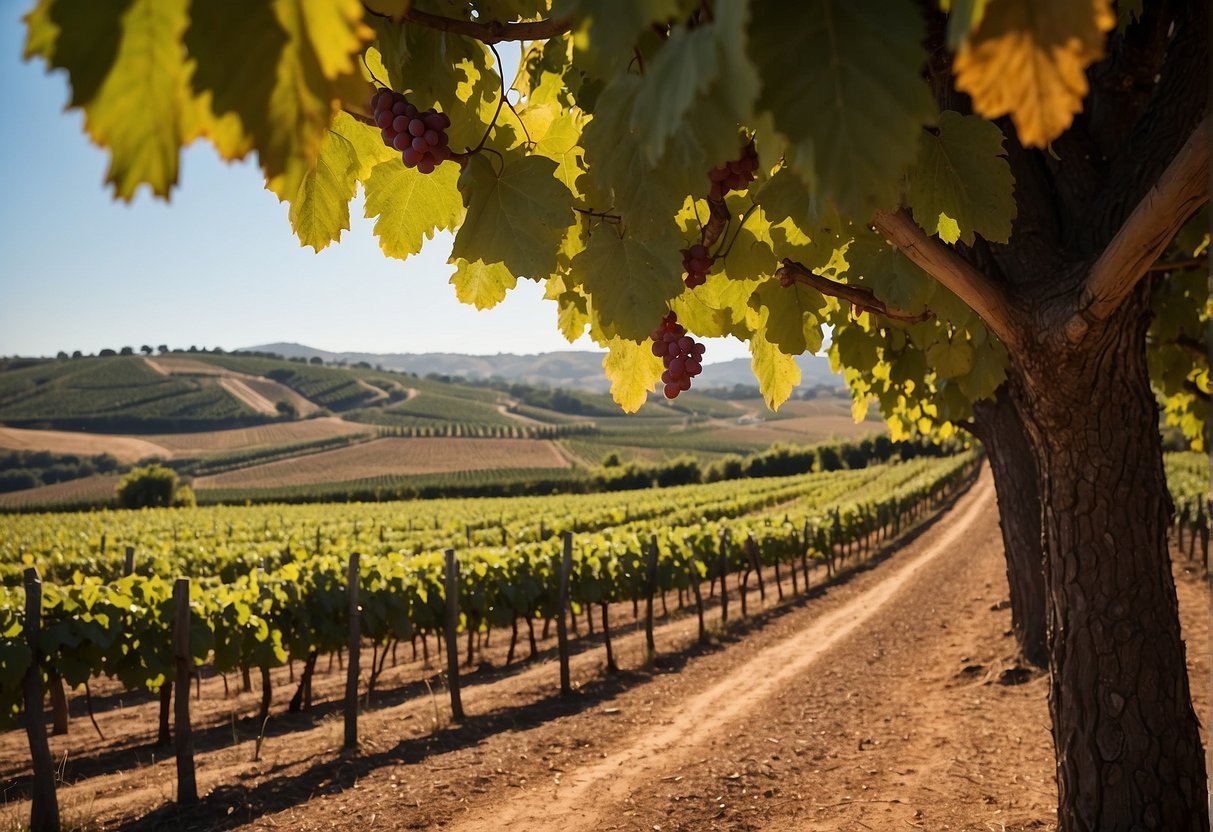
When you select a bottle of wine from Portugal, the label is your guide to understanding the wine’s quality and origin. It reflects the stringent standards set by Portuguese wine regulations to ensure you’re enjoying an authentic experience.
DOC (Denominação de Origem Controlada)
Denominação de Origem Controlada (DOC) is the primary classification you’ll encounter, signifying the highest standard in Portuguese wines.
If your bottle has a DOC label, it means the wine has been produced within a specific region that adheres to strict wine production regulations. These rules govern everything from the types of grapes used to production methods and aging requirements, ensuring that the wine you pour reflects the unique character of its origin.
Vinho Regional and Table Wines
Below the DOC, you’ll find Vinho Regional (VR), which offers winemakers more flexibility in terms of grape varieties and techniques.
These wines still reflect their regional heritage but allow for innovation. VR wines can often provide a more modern twist on Portuguese tradition.
On the other end of the spectrum are table wines.
These are the most basic classification, indicating that while the wine is still enjoyable, it doesn’t adhere to the strict geographical and production standards of DOC or VR wines. Table wines can be from any part of Portugal and are a great everyday option if you are looking for something simple and easy to drink.
Viticulture and Winemaking Practices
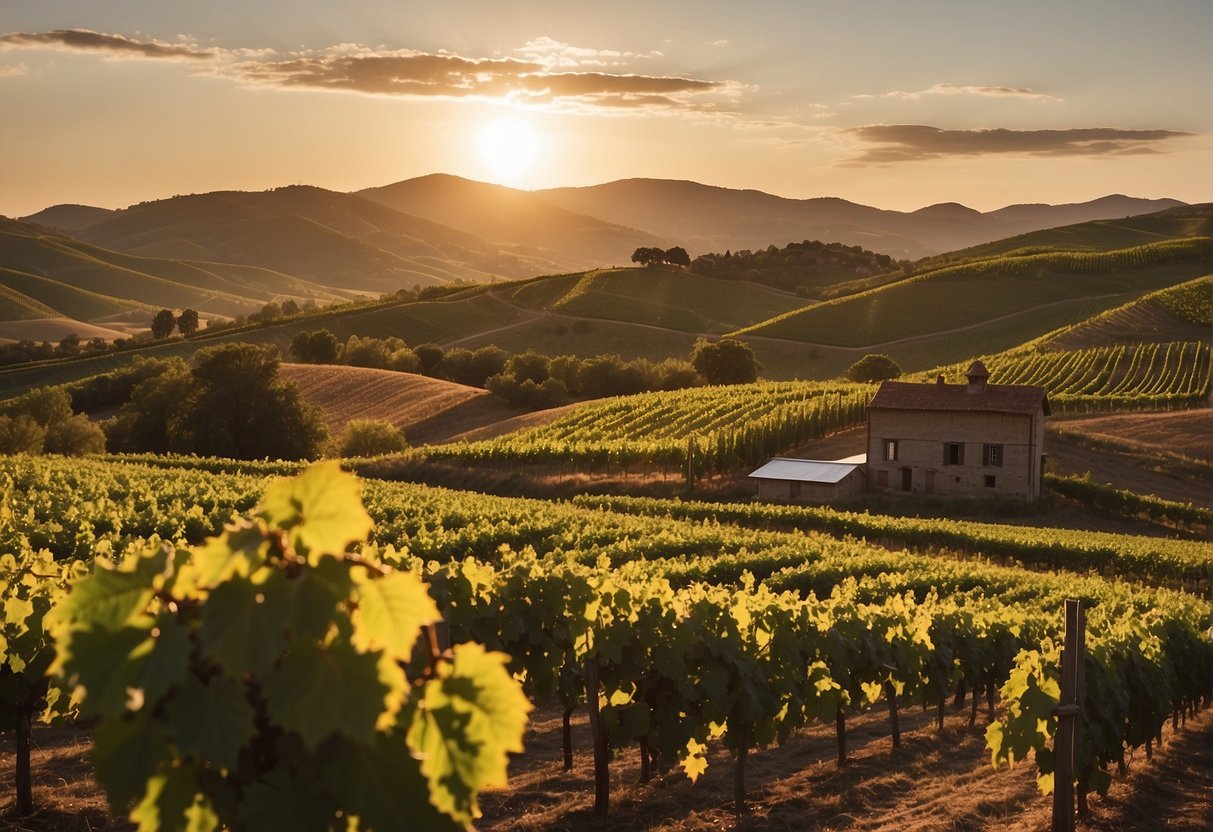
In Portugal, your journey through viticulture and winemaking is as diverse as it is rich.
The climate significantly influences the grape varieties you’ll find across various regions, ranging from cool, rainy areas in the northwest to warmer, drier climates further south. The Douro Valley, for one, offers a stunning landscape where the terroir speaks through every glass of wine.
Speaking of terroir, it’s the unique combination of soil, climate, and landscape that affects the grapes you grow in your vineyard.
The Portuguese terrain varies greatly from region to region:
- Granite in Dão,
- Limestone in Bairrada,
- Schist in Douro.
These soil types contribute to the distinctive flavors of the wines you’ll taste.
Your winemaking practices might include traditional methods like foot-treading in lagares, especially in regions like the Douro, where port wine is crafted.
Sustainable viticulture is also a growing trend as you look towards improving the environmental footprint of your vineyard activities.
Here’s a brief on the viticulture and winemaking process:
- Choose your region carefully, considering climate and soil.
- Select grape varieties that best express the terroir.
- Harvest grapes when they reach optimal maturity.
- Ferment grapes with care to retain unique regional flavors.
- Age the wine in appropriate barrels or tanks.
The Cultural Significance of Wine in Portugal
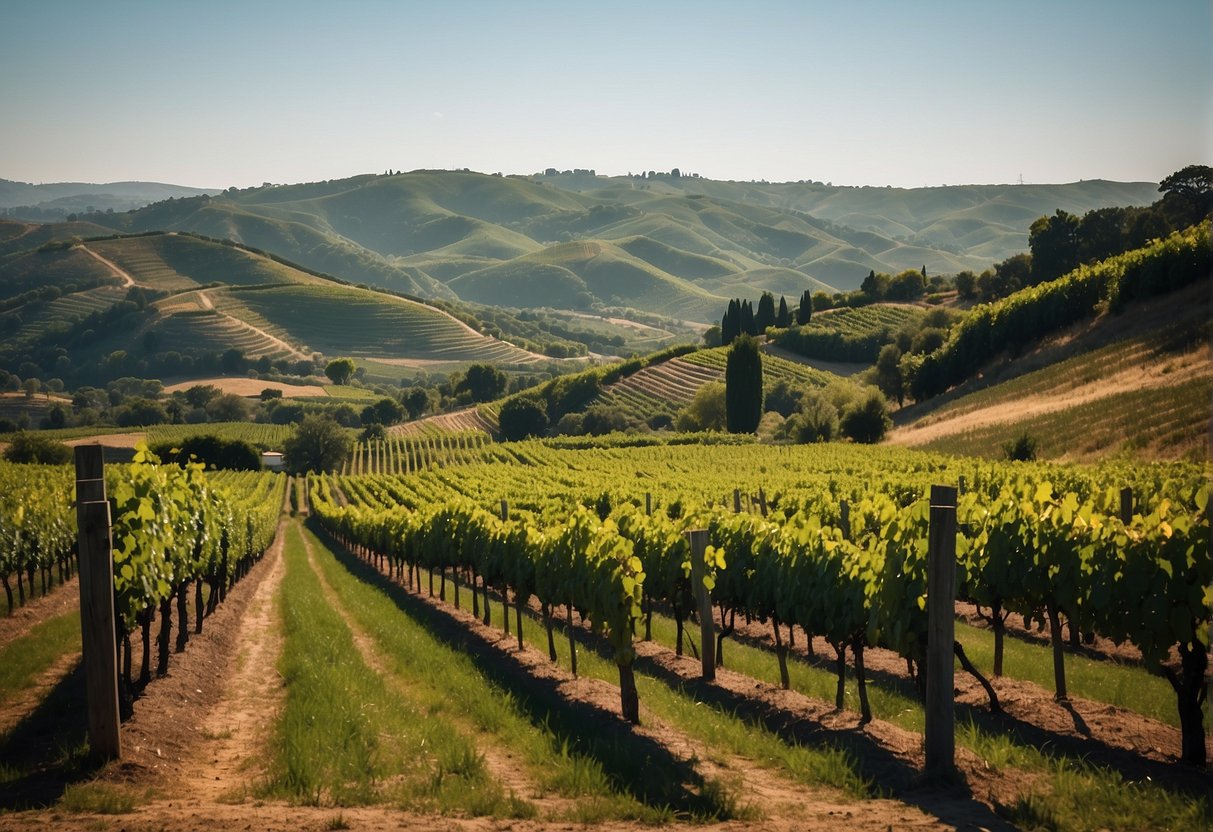
Wine in Portugal is more than just a beverage; it’s a cultural emblem that symbolizes the rich history and social fabric of the region.
If you travel through the Portuguese landscape, you’ll notice that vineyards aren’t just agricultural plots; they’re a testament to the cultural heritage of a nation where winemaking traditions go back more than 4,000 years.
Your encounter with Portuguese wines will reveal that each bottle carries a story of unique grape varieties. Some of these, like Touriga Nacional and Tinta Barroca, are indigenous to Portugal.
The significance of these wines is recognized on a global stage, with the Douro Valley wine region being registered as a UNESCO World Heritage site. This reflects not only the exceptional quality of the wines but also their contribution to humanity’s cultural heritage.
As you delve into Portugal’s wine culture, you’ll find that communities celebrate their winemaking with festivals and events throughout the year. These events integrate traditional music, food, and, of course, wine tasting.
The process of creating Portuguese wine is a family affair passed down through generations, strengthening bonds and preserving regional identities.
Your enjoyment of Portuguese wines is an acknowledgment of the country’s commitment to maintaining its ancient winemaking practices while also embracing innovative techniques.
Whether you’re sipping a glass of Vinho Verde from the coastal northwest or a rich red from the sun-drenched plains of Alentejo, you’re not just tasting a wine; you’re participating in Portugal’s living culture.
Portuguese Wine in the Global Market
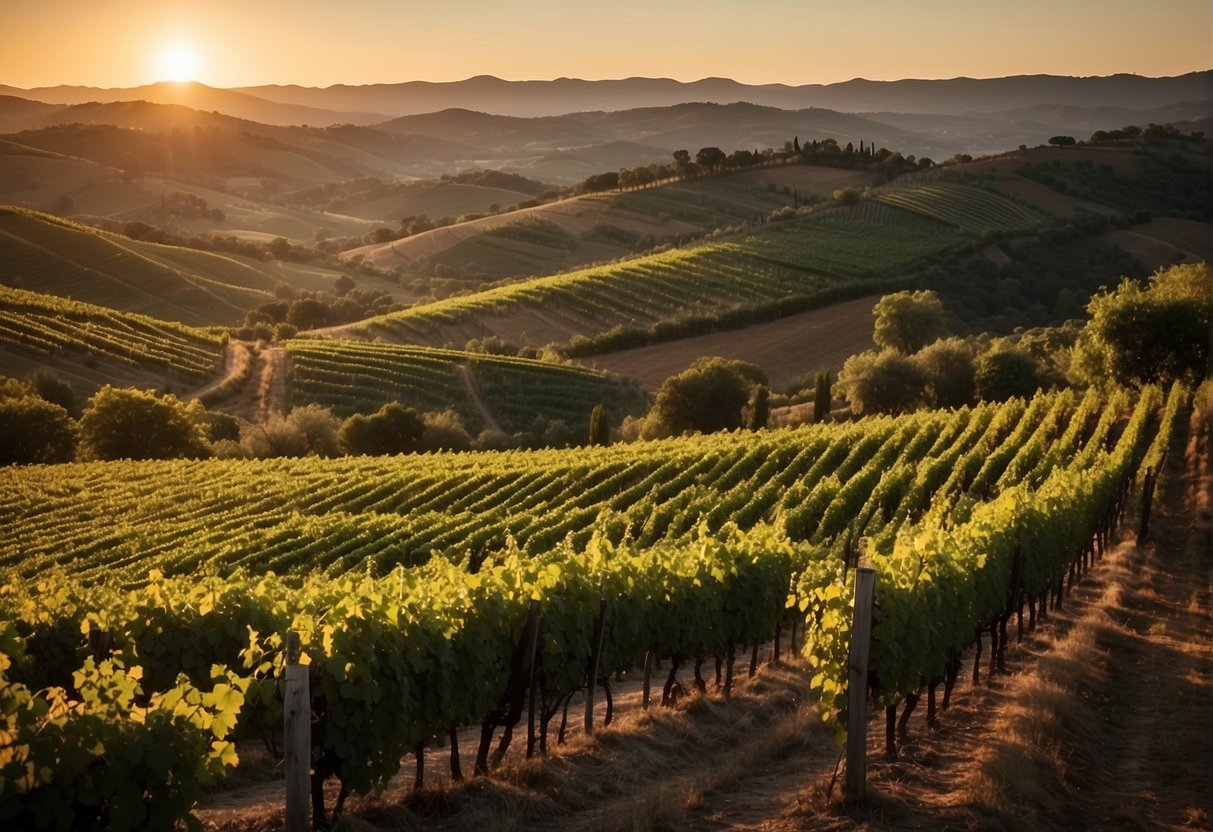
Portuguese wine stands out in the global market for its rich diversity and unique regional profiles.
As you explore the world of wines, Portugal offers a captivating variety that consistently garners international recognition.
Its strategic efforts to boost exports have resulted in substantial growth within European markets and beyond.
In 2021, for instance, Portuguese wine shipments saw a remarkable 8.11% increase, with countries like Poland experiencing a growth of 19.54%, signaling a robust demand for Portugal’s vinous offerings.
The country’s wine regions, such as Douro, Lisboa, and Alentejo, are not just prolific but also varied. These regions produce nearly 3.8 million hectoliters in a single season.
These regions are known for their distinctive character and have especially contributed to the perception of Portugal as a top-tier wine producer.
Your enjoyment of Portuguese wines is echoed around the globe as more enthusiasts are drawn to the unique bottlings.
The international wine community often highlights the Douro Valley, the first demarcated wine region in Portugal, for its exceptional wines that embody both tradition and innovation.
Here is a quick look at the performance and recognition of Portuguese wines internationally:
- Europe: Significant export growth, notably in Poland, Germany, and Denmark.
- Douro Valley: Lauded for producing elegant and complex wines.
- Global Recognition: Steadily increasing due to quality and authenticity.
Your appreciation for Portuguese wines also supports a heritage that spans centuries. With each bottle, you are part of a trend that continues to thrust Portuguese wines onto the world stage.
Wine Tourism in Portugal
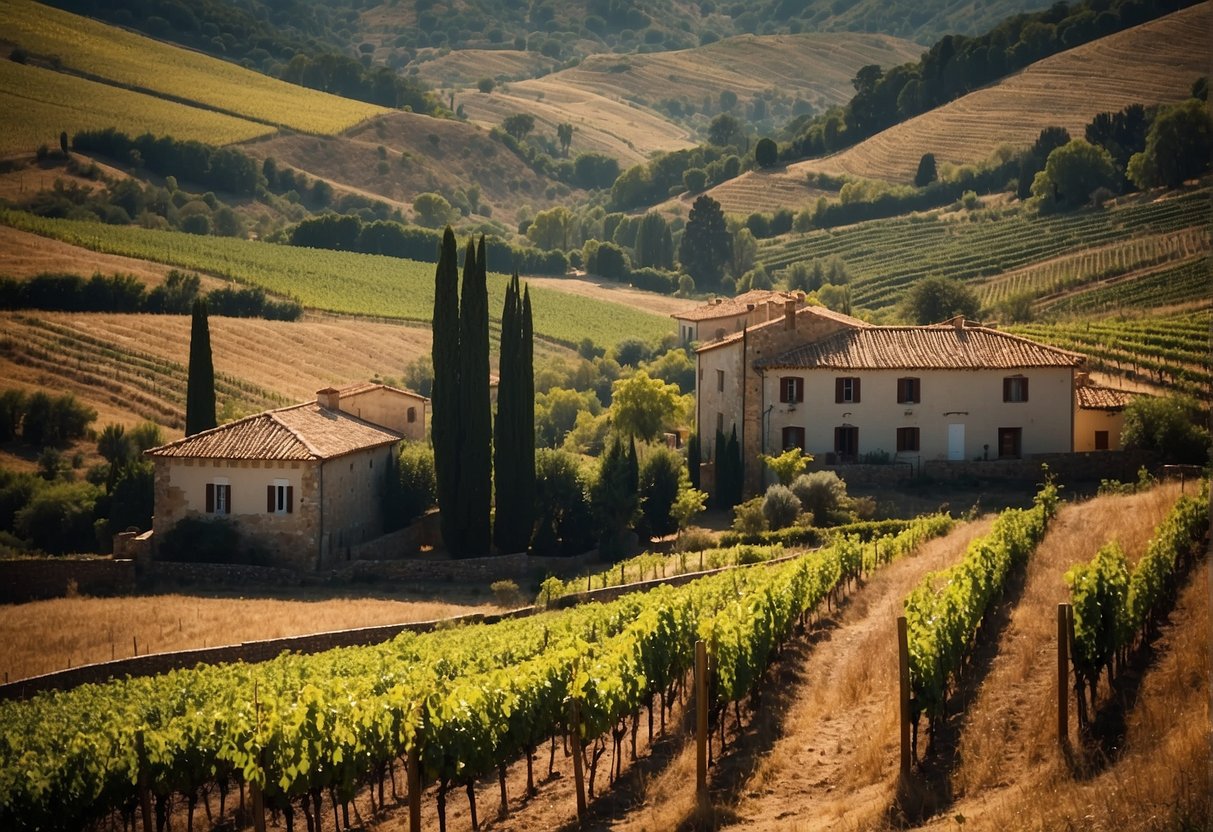
If you’re a wine enthusiast, Portugal should be high up on your list of destinations.
Your experience in Portuguese wine regions can range from the steep terraced vineyards of the Douro Valley to the sun-bathed plains of the Alentejo.
- Douro Valley: Known for its scenic beauty and its world-renowned Port wines. Here, you can visit quintas, which are traditional wine estates, many of which offer tastings and tours. Check out some of the best wineries to add to your itinerary.
- Alentejo: This region balances wine-making with rustic charm. Its vineyards stretch across the landscape, creating a patchwork of scenic beauty perfect for a relaxed afternoon tasting.
When exploring these regions, you have the unique chance to stay at a quinta, immersing yourself fully in the wine-making process.
A visit to these quintas, which often includes staying in historic properties, puts you right in the heart of vineyards and traditional winemaking practices.
Wine tourism isn’t just about the wines; it’s also about cultural and gastronomic experiences.
You’ll find pairings of local wines with regional specialties, guiding your palate through a journey that is authentically Portuguese.
With over 14 wine regions and numerous Denominação de Origem Controlada (DOC) areas, Portugal offers a diverse range of wines and wine tourism experiences.
From the stunning Azores islands to the robust wines of Bairrada, find your perfect wine-tasting adventure across different Portuguese wine regions.
As you plan your trip, keep in mind that wine tourism in Portugal is more than a journey; it’s an experience that will stay with you long after the last glass is poured.
Enjoy the landscapes, the flavors, and the warmth of Portuguese hospitality as you traverse this old-world wine haven.
Frequently Asked Questions
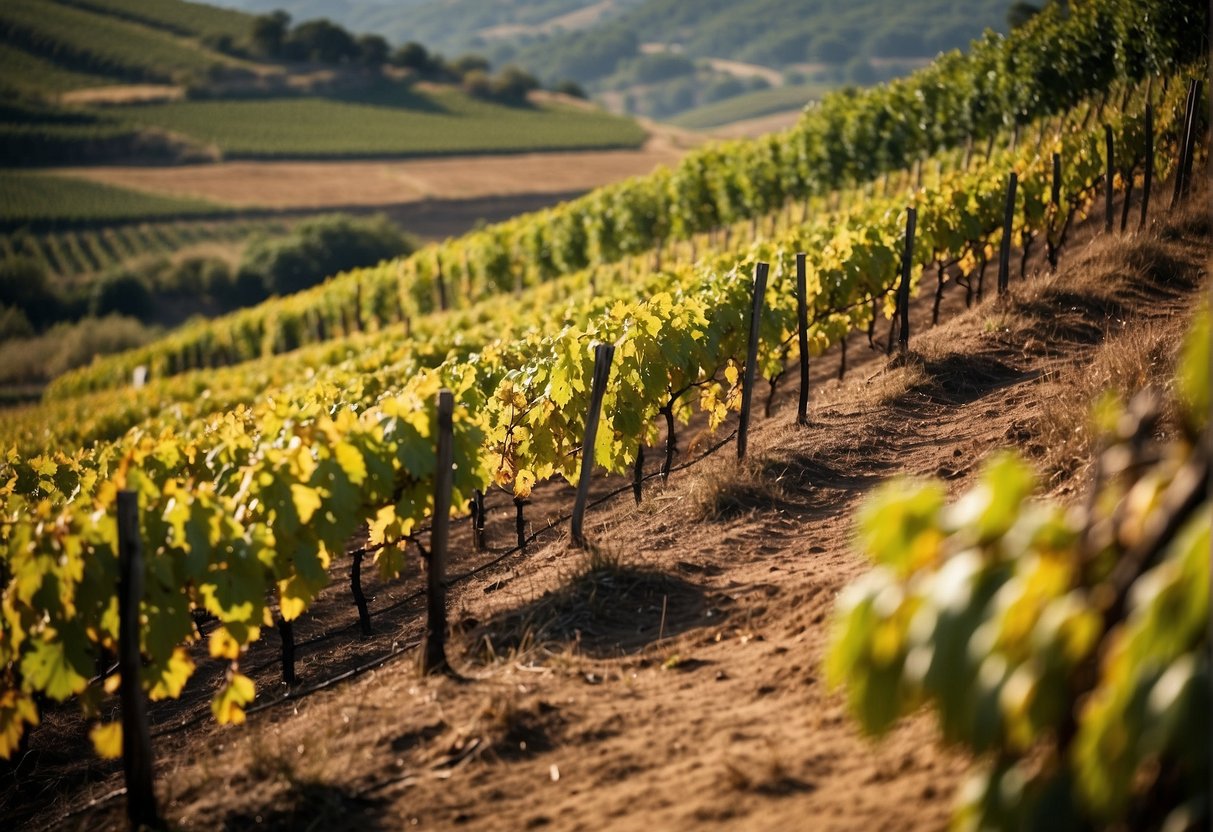
Portugal’s wine regions offer an incredible array of choices for every type of wine enthusiast. Whether you’re a fan of bold reds or crisp whites, you’ll find a Portuguese wine that’s perfect for any occasion.
What are some must-try wines from top wine regions in Portugal?
Explore the rich tapestry of Portuguese wines starting with the robust and complex Port wines from the Douro Valley.
For a unique taste of Portugal, savor a glass of Vinho Verde, or if you favor age-worthy reds, Alentejo’s Alicante Bouschet is a must-try.
Could you recommend the best Portuguese white wines for a casual dinner?
Absolutely, for a casual dinner consider the zesty Vinho Verde or a textured and aromatic Alvarinho.
Both pairs wonderfully with light fares such as seafood or salads and capture the spirit of Portuguese white wines.
Which types of red wine are Portugal most famous for?
Portugal is renowned for its Port, particularly from the Douro region, but don’t miss out on the rich and fruity reds like Touriga Nacional and Tinta Roriz that are gaining international acclaim.
How do the wine regions in Douro differ from those in other parts of Portugal?
The Douro wine region is characterized by its rugged terrain, terraced vineyards along steep riverbanks, and a hotter climate. These create profound and structured wines that are truly distinctive compared to the cooler, maritime climates found elsewhere in Portugal.
In which Portuguese city is wine culture most prominent?
Lisbon, with its thriving wine bars and nearby regions such as Setúbal and Colares, is a focal point for wine culture in Portugal, offering an urban gateway to Portuguese viniculture.
Are there any affordable Portuguese red wines that offer exceptional value?
Definitely. Look for wines from regions like Dão or Bairrada. These regions produce exceptional red wines. The wines won’t break the bank yet offer complexity and quality often found in more expensive bottles.
